The late Wally Parks was quite a visionary. As most motorsports enthusiasts know, the founder of the National Hot Rod Association devoted his adult life to hot rodding and drag racing, promoting safe, organized competition and reaching out to the community to spread the gospel. Today, the edifice that bears his name, the Wally Parks NHRA Motorsports Museum, continues with that vision. It should also be noted that the Automobile Club of Southern California has long supported Wally’s dream and is the presenting sponsor of the museum and the California Hot Rod Reunion.
With the help of many, including the late John Zendejas, Steve Gibbs, Wayne Phillips and longtime Curator Greg Sharp, Wally’s dream was realized. After many years of planning and acquiring important vehicles (a number of which were on loan) that played a role in hot rodding’s growth, the then Historical Services Division of the NHRA first opened in a small industrial unit adjacent to the famed Auto Club Pomona Raceway. Then, in April of 1998, the museum formally opened its doors with nearly 50 cars and a sizeable collection of memorabilia at its current location.
Now, nearly 20 years later, the 28,500-sq-ft facility located at 1101 W. McKinley Avenue in Pomona, California (access at Gate 1 in the southeast corner of the Los Angeles County Fairplex) has grown its collection, been remodeled and embarked on a number of programs designed to introduce American hot rodding to the public—especially young people.
Located in the southeast corner of the Los Angeles County Fairgrounds (Fairplex), the Wally Parks NHRA Motorsports Museum does an admirable job of telling the story of hot rodding and drag racing.
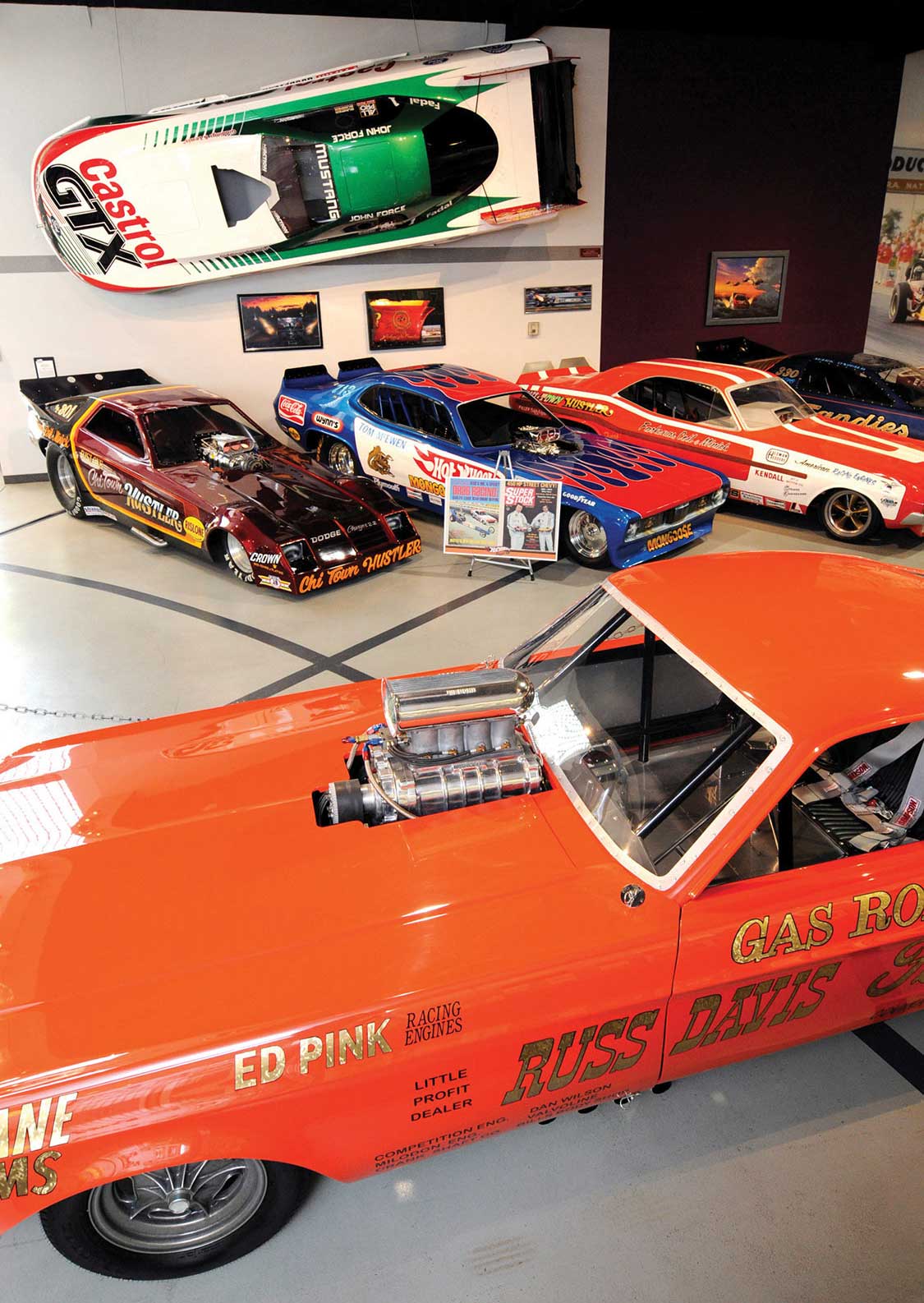
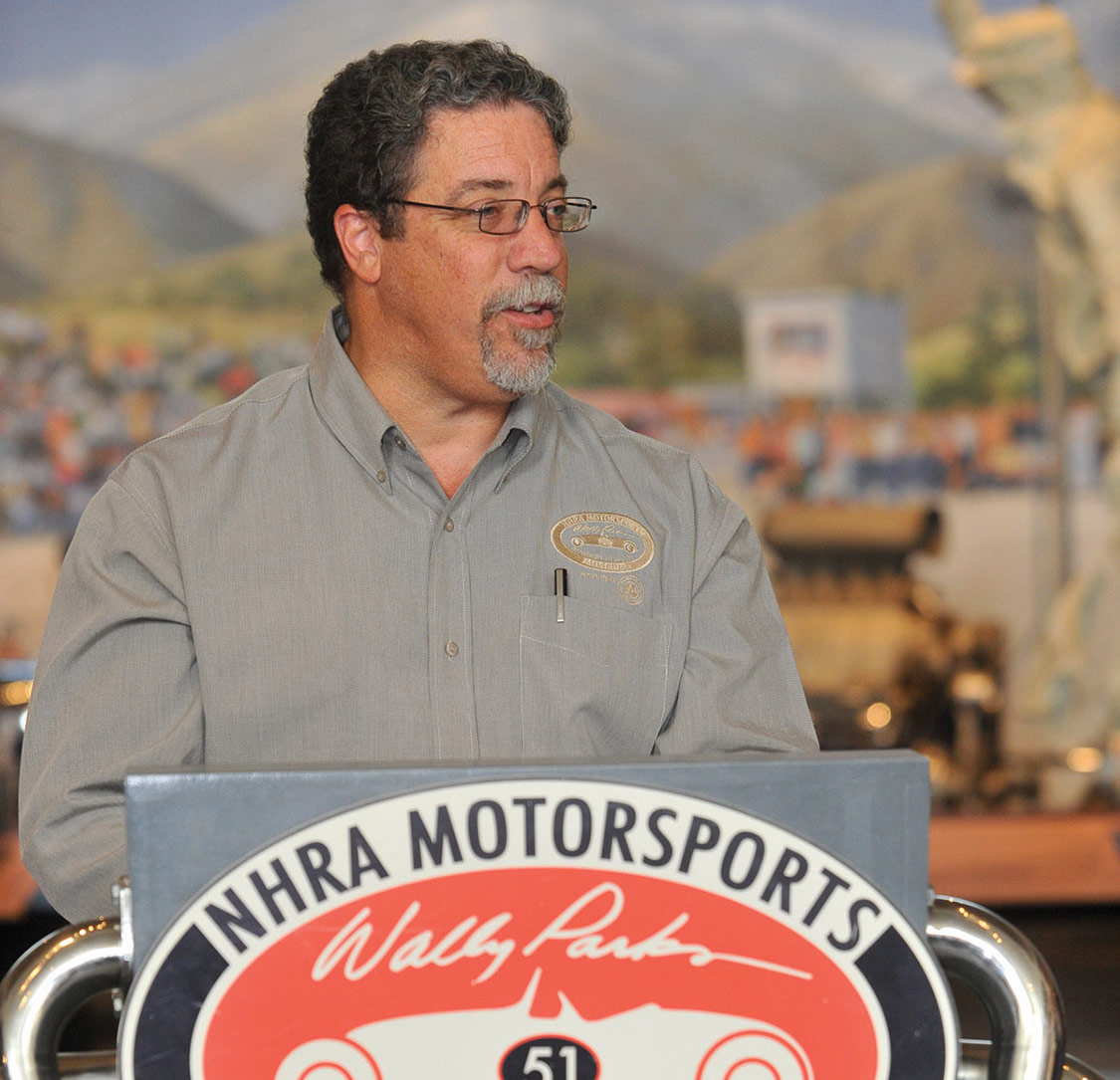
Today, visitors to the museum are greeted by the Chrisman, Brinker Gallery of Speed (debuted mid-2014), which incorporates interactive displays, sculptures and other important items to help tell the story of American hot rodding. Actually, strategic planning for the “new” Wally Parks NHRA Motorsports Museum started about five years ago, and many components (the Chrisman, Brinker Gallery among them) are being fulfilled. The museum has essentially been organized into sections that tell the story of hot rodding’s origins, street rods, lakes racing and, of course, drag racing.
The museum’s success starts with the passion and leadership that comes from the museum’s board of directors, many of whom are hot-rodding legends themselves. The museum’s comprehensive collection and the stories these vehicles can tell have been nurtured by curator extraordinaire Greg Sharp (unquestionably the nation’s most qualified keeper of hot-rodding history and the subject of a previous “Behind the Scenes” column), but there’s a new kid on the block who’s been instrumental in the implementation of many programs: Larry Fisher, executive director of the Wally Parks NHRA Motorsports Museum.
Fisher, who came aboard in August of 2012, is not only a car guy, he also brings to the position 20-plus years of experience working in the museum and exhibition field. He was the CEO and executive director of the Herreshoff Marine Museum and America’s Cup Hall of Fame in Bristol, Rhode Island, and has been a consultant to the Henry Ford Museum and Greenfield Village in Dearborn, Michigan. Fisher also worked for Walt Disney’s Imagineering Group, world-renowned for creating themed displays, and was president and executive director of the Barnum and Circus World museums.
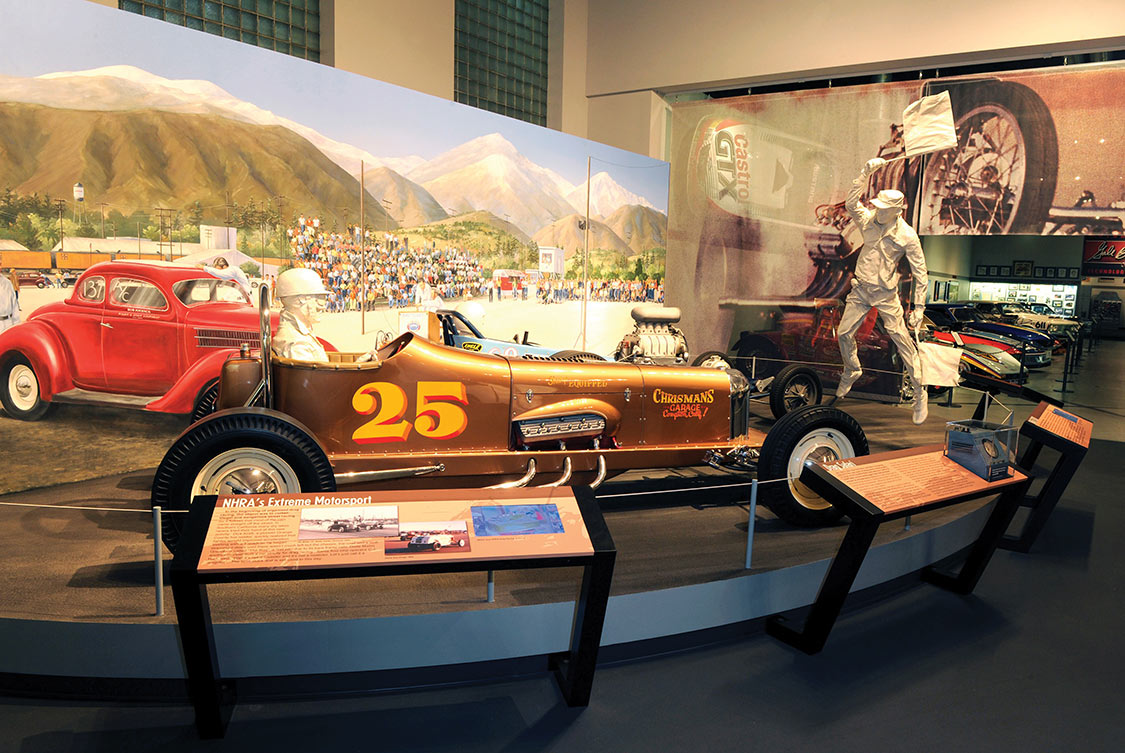
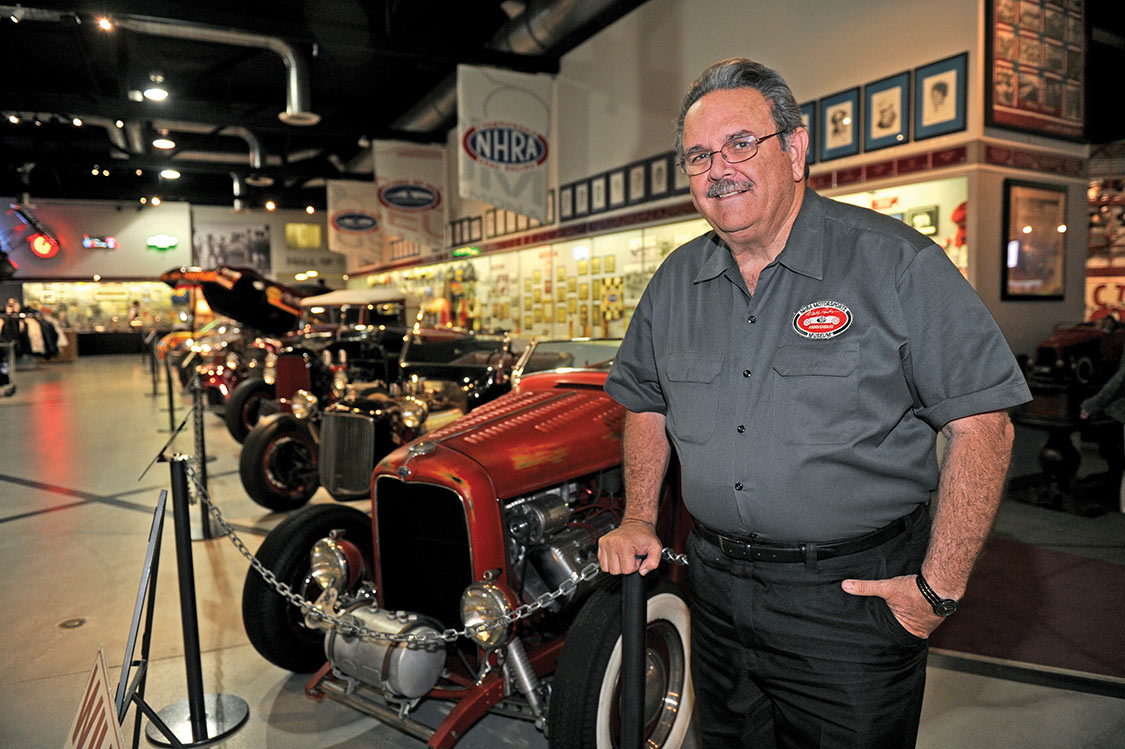
The Pasadena, California, native has racing in his blood. His father raced sports cars with the SCCA, and his mother did some drag racing as a teenager. Fisher spent a number of years out of school working as a machinist and fabricator for the late Dick Guldstrand, a hot rodder who became one of the world’s foremost Corvette and Camaro road racers.
The entire museum staff, including Rose Dickinson, director of marketing and operations, has been an essential component in maintaining its momentum.
Among Fisher and the museum’s goals are to get young people excited about motorsports technology and the many related career opportunities. The museum is planning a science and technology gallery, and developing student programs with Cal Poly Pomona and the Fremont Academy of Engineering & Design, which is a public high/middle school (grades 7-12) that focuses on STEM (Science, Technology, Engineering and Math) education. There’s a huge need to get kids to have tools in their hands instead of a smart phone.
… visiting the Wally Parks NHRA Motorsports Museum is a must for any drag racer or car guy/gal.
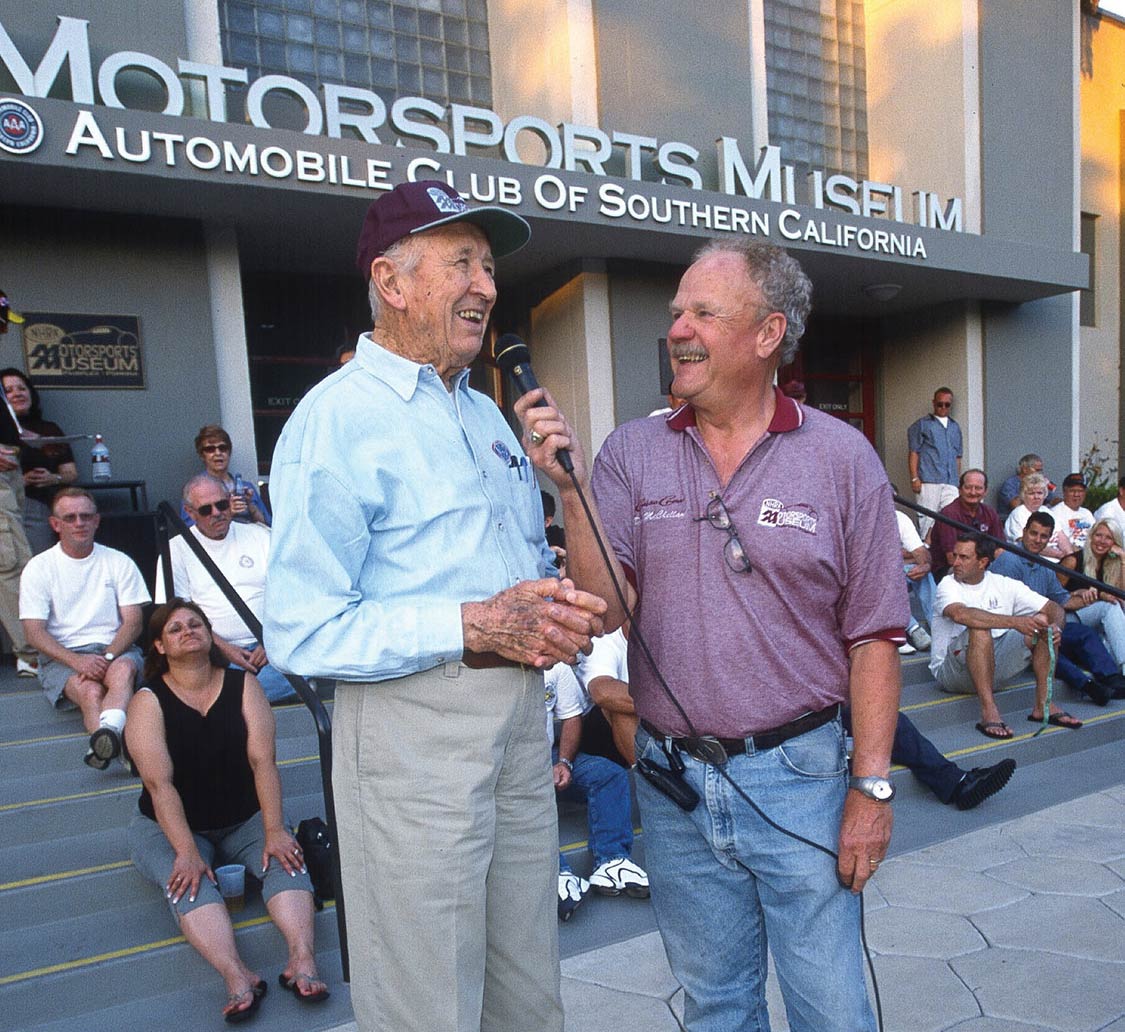
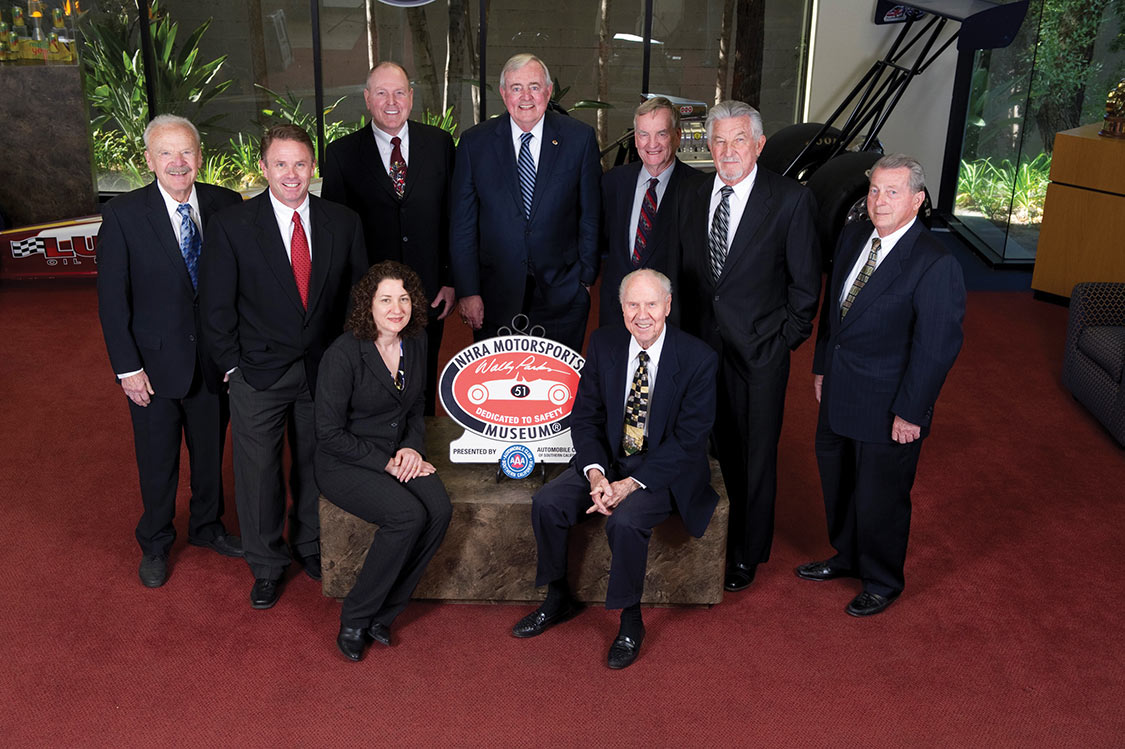
How can we help the museum achieve its goals? First and foremost by becoming a member of the organization. Membership comes with a variety of benefits and special event opportunities. An important part of the museum’s funding comes from the California Hot Rod Reunion in Bakersfield, California, and the Holley National Hot Rod Reunion in Bowling Green, Kentucky.
Participation and attendance at these seminal events also helps pay the bills. You can purchase 1320 Club plaques in the name of any individual or family (they’re 5×12-inch silver and maroon plaques displayed in the museum). Donations to the non-profit 501(C)(3) organization are always welcome.
It goes without saying that visiting the Wally Parks NHRA Motorsports Museum is a must for any drag racer or car guy/gal. And there’s a gift shop that has a plethora of really cool stuff. Museum hours are Wednesday through Sunday from 10 a.m. to 5 p.m., plus special events and cruise nights. Check everything out at NHRAmuseum.org. When you visit the museum, try to bring along a young person or two.
Editor’s Note: A version of this article first appeared in the June 2017 print issue of the Drive Magazine.
On August 27, 2016 his family and about 450 friends gathered at the Wally Parks NHRA Motorsports Museum to give Art Chrisman the kind of send-off that he would have appreciated. Dave McClelland was the narrator and conductor and museum historian and curator Greg Sharp wrote a moving tribute, accompanied by photographs of Art: “Hot Rodding’s Renaissance man Art Chrisman passed away July 5th after valiantly battling cancer for more than six years.
Rarely can one man build a racing chassis from the ground up, or the metalwork, paint it, build the engine that supplies record breaking power, tune it to perfection, and drive the results of his handiwork to victory.
Art Chrisman could do all that and more…Truly a pioneer of the landspeed and drag racing sports, Chrisman street-raced near his Compton, California home until the first legal dragstrip opened at nearby Santa Ana in 1950. His self-customized ’36 Ford 4-door sedan that he raced at Santa Ana was featured in Hot Rod Magazine in 1951, beginning a string of projects that graced five Hot Rod covers in the 1950s as well as countless stories in virtually every enthusiast magazine on the stands.
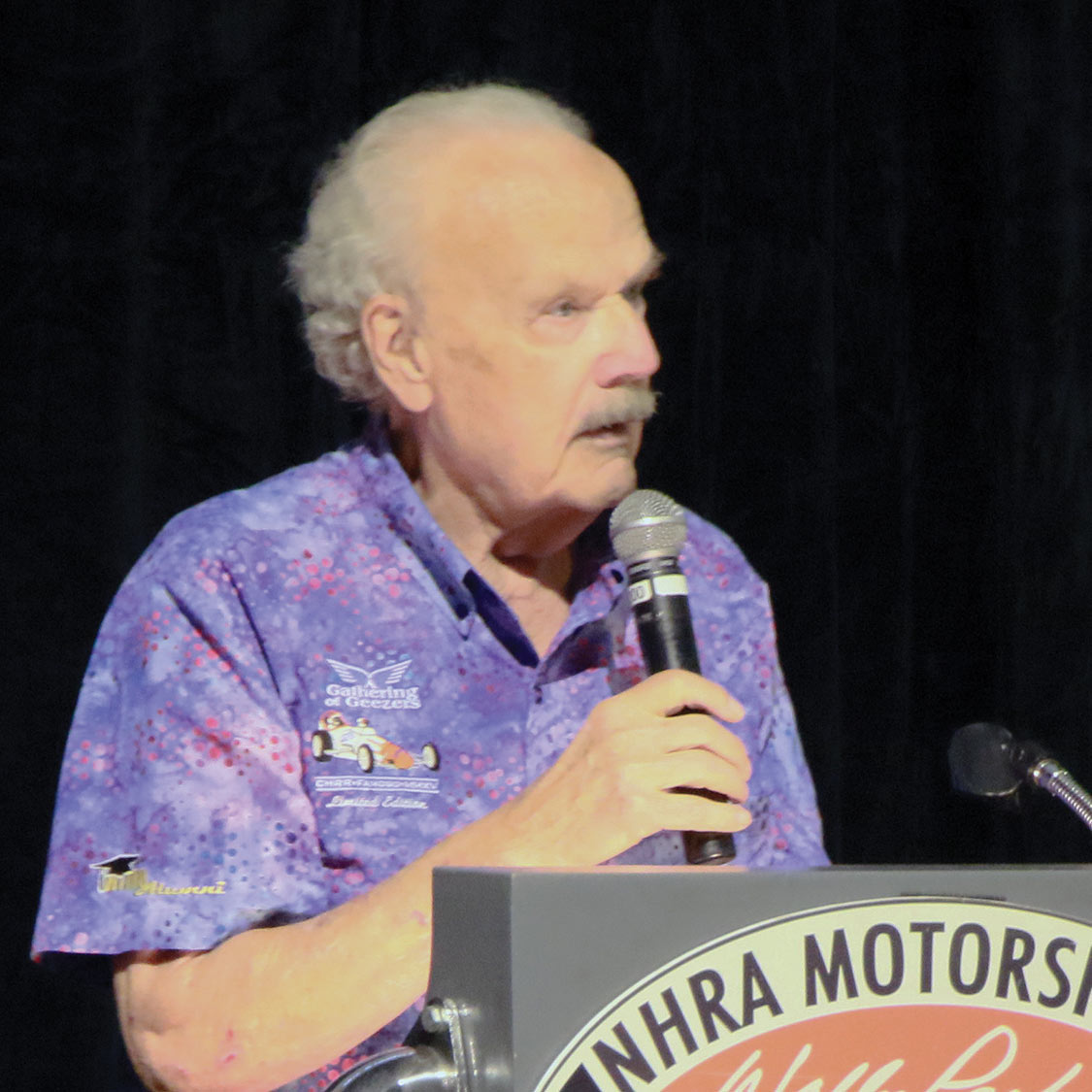
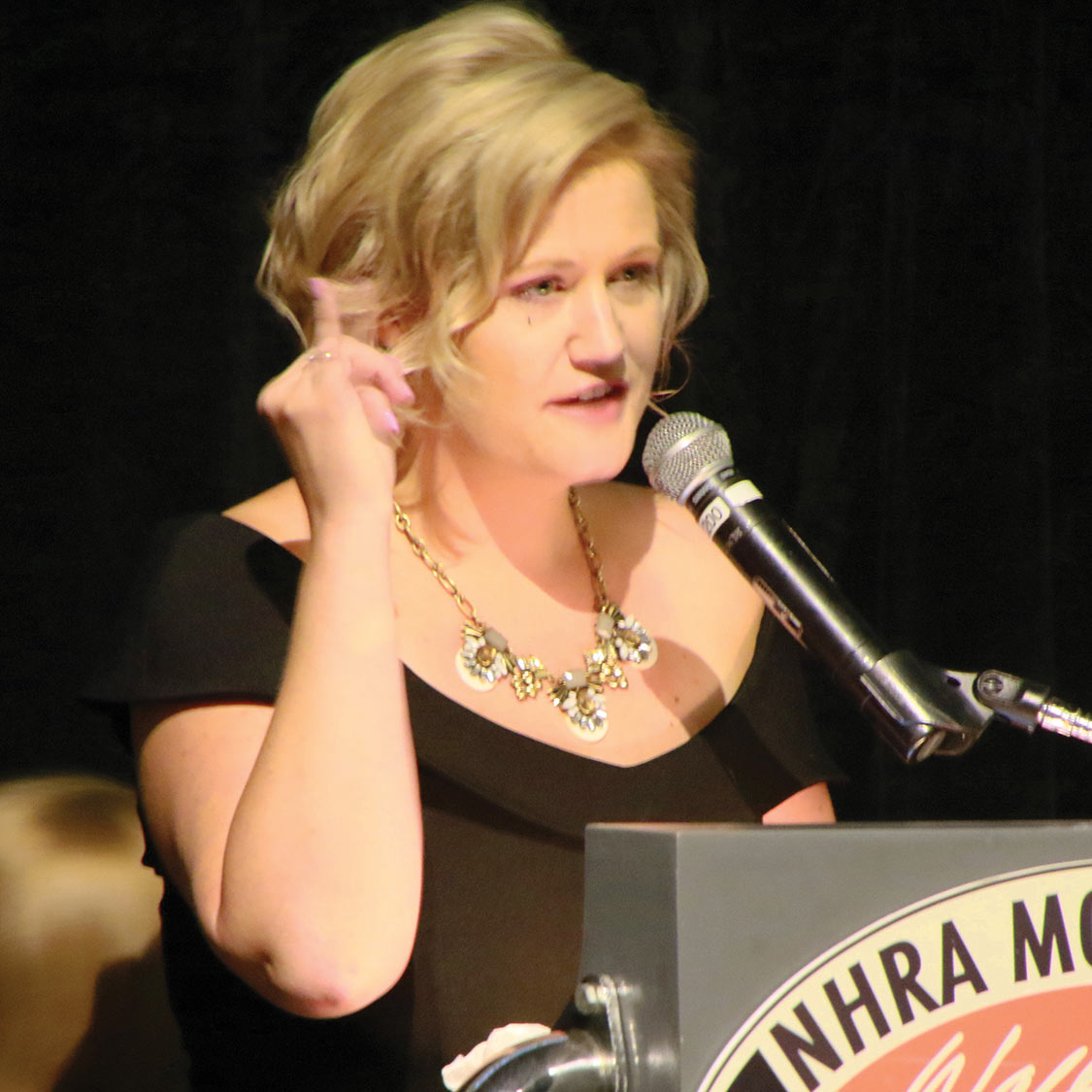
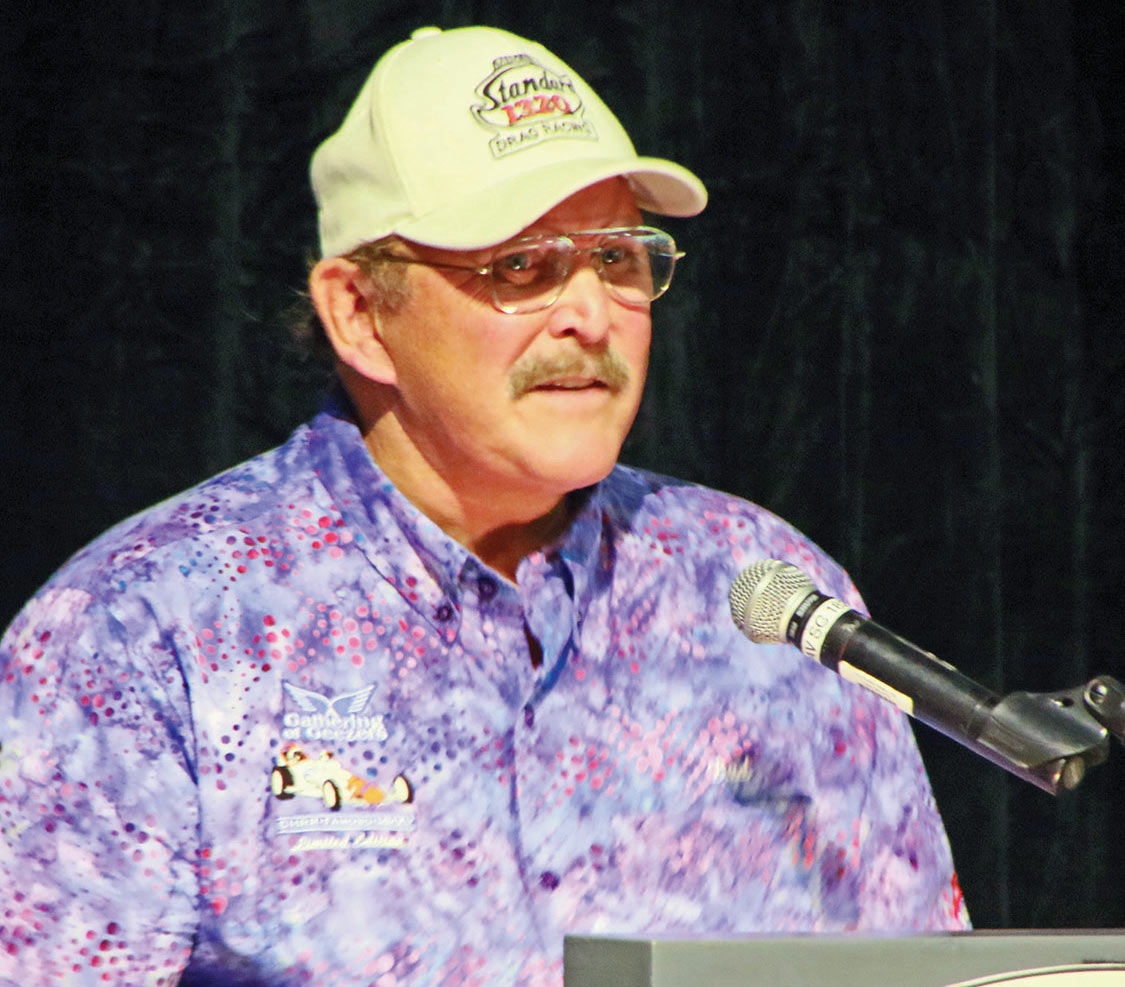
“In 1952, Art helped cam grinder Chet Herbert build his ‘Beast III’ streamliner for the Bonneville National Speed Trials. Thanks to a 235.991 mph pass Art was one of the first…to exceed 200 mph, and thus became a charter member of the Bonneville 200 MPH Club. He was the last living charter member.
Art and [brother] Lloyd then built a radically modified mid-engine ’30 Model A Ford that was billed as ‘The Most Fantastic Coupe!’ on the February 1954 Hot Rod cover. Art drove it nearly 200 mph at Bonneville in 1955.
“Chrisman enjoyed tremendous success with the two dragsters his name is closely associated with. His famed No. 25 dragster, converted from a dry lakes modified dating back to the 1930s, was the first to exceed 140 mph (in 1953), appeared on the May 1953 cover of Hot Rod, and made the very first run at the first NHRA Nationals at Great Bend, Kansas in 1955.
When old No. 25 began to get outrun by the newer slingshot dragsters, a sleek new machine called the ‘Hustler’ emerged from Chrisman and Sons Garage, and was soon after named ‘Best Engineered’ at the 1958 NHRA Nationals.
It appeared on the Jan. 1959 cover of Hot Rod and a month later scorched the strip on the back straightaway of Riverside Raceway at 181.81 mph, making Art the first drag racer to exceed 180 mph. In March, after dozens of runs, Art drove the Hustler to the Top Eliminator title at the first Bakersfield U. S. Fuel and Gas Championships (the famed Smokers March Meet).
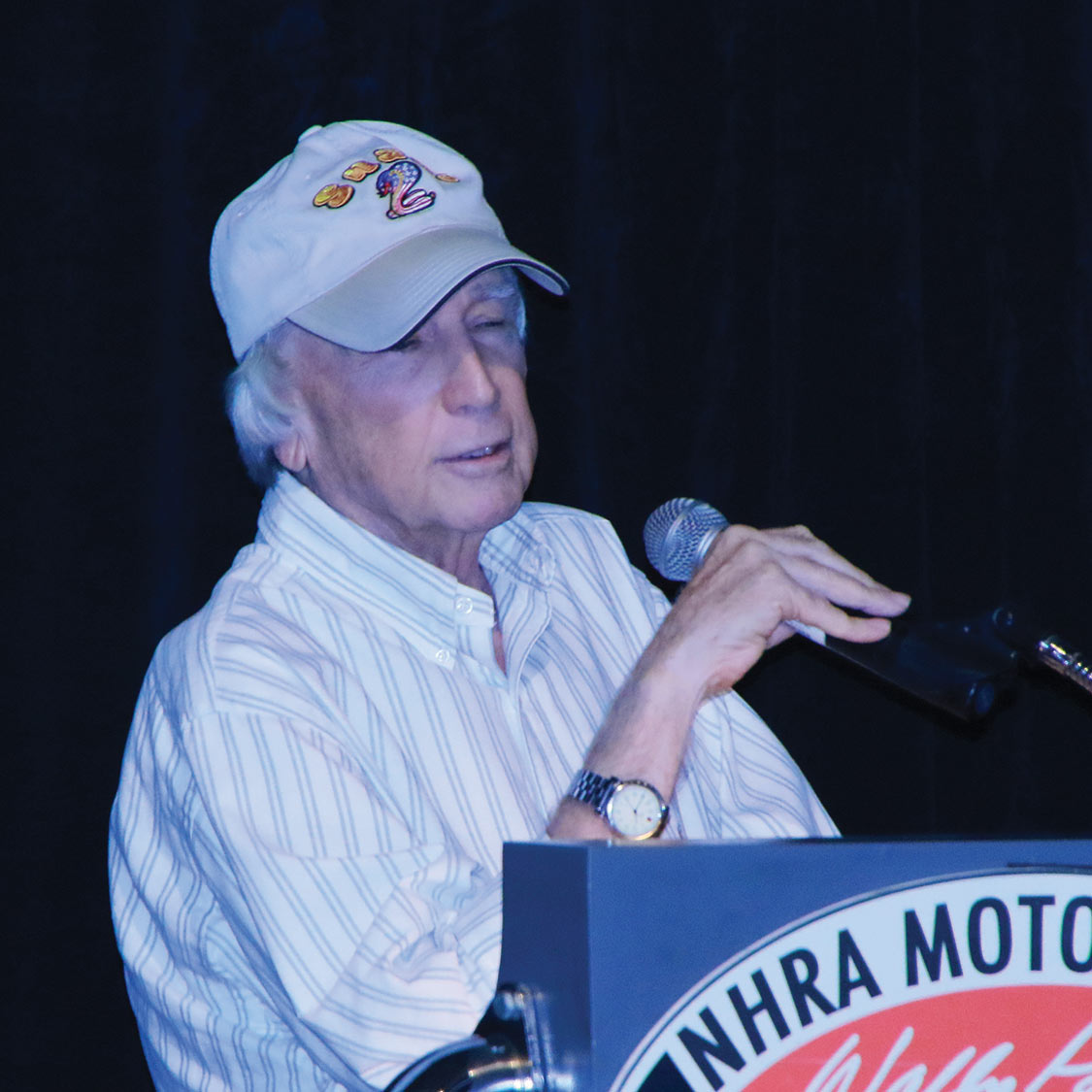
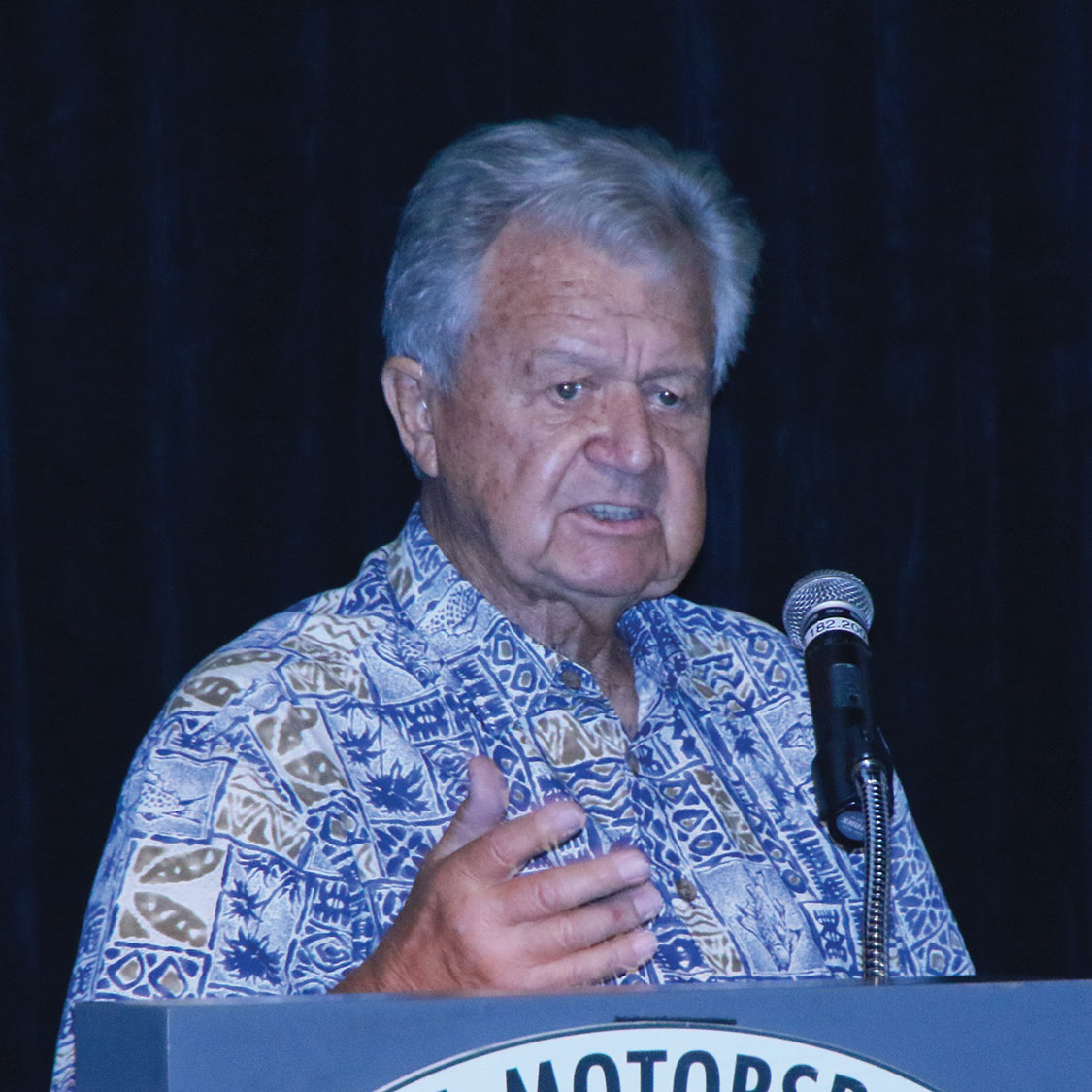
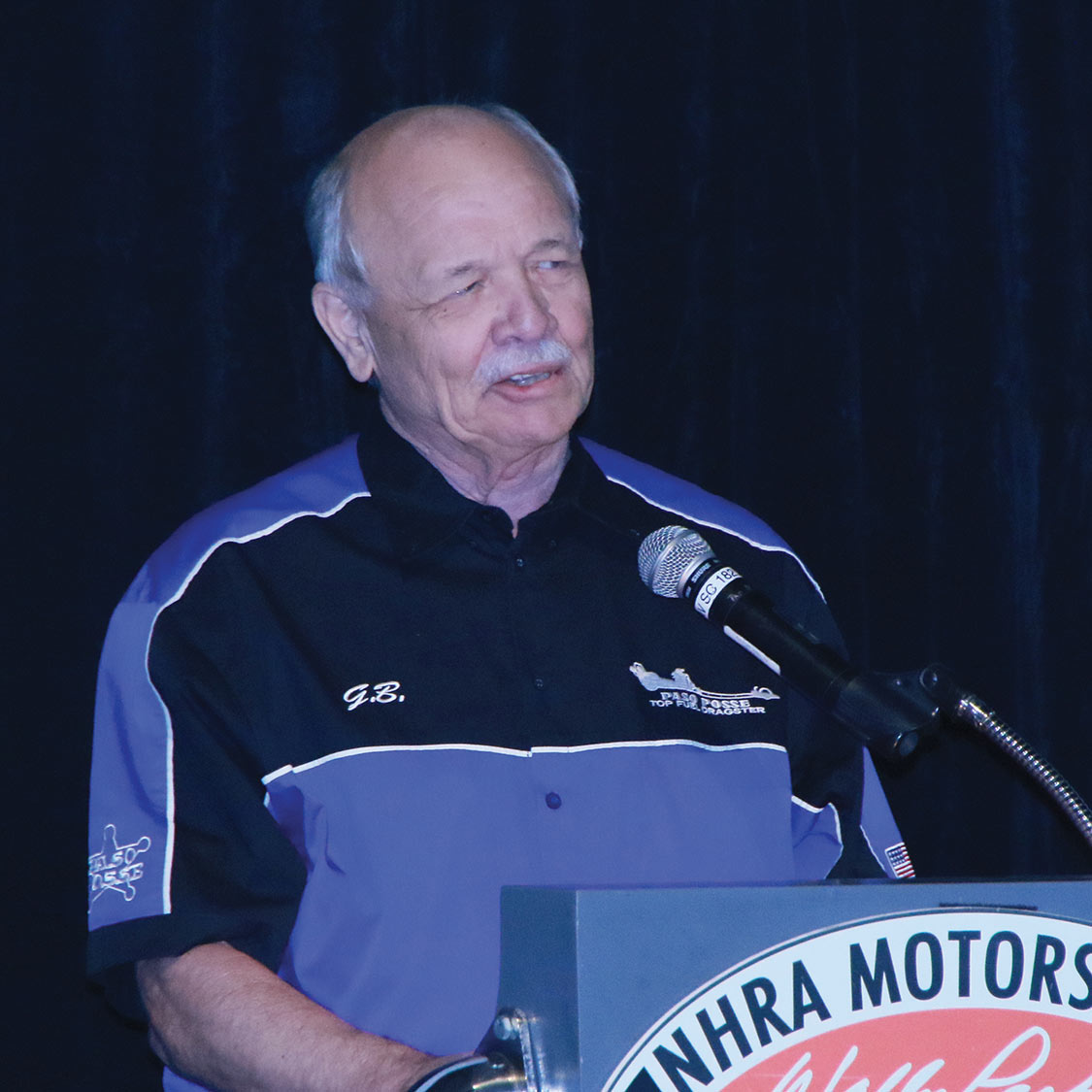
“No doubt, there would have been much more racing success had he not accepted a position with Ford’s Autolite Spark Plug Division in 1962. He traveled the country working in all forms of racing, including NASCAR, USAC Indy cars, NHRA drag racing and Bonneville.
Before data recorders and computers, men like Art Chrisman advised mechanics on tune-ups based on their expertise at reading spark plugs. Few ever did it better. After 10 years, Ford sold off Autolite Division and Art turned to dynamometer installation and operation.
In the early ‘80’s, he partnered with his son Mike to form Chrisman’s Auto Rod Specialties (CARS) in Santa Ana, just a stone’s throw from the site of the first run over 140 mph he made at the Santa Ana Drags four decades earlier. They have since turned out dozens of magazine quality race cars and hot rods. He has built countless engines… In 1994, together with very talented hot rodders Steve Davis, Tony Nancy and ‘Junior’ Conway, Art and Mike built Joe MacPherson’s AMBR-winning Infinity Flyer roadster.
“Perhaps no family has had more influence on hot rodding and straight line racing branches than the Chrismans. In the ‘50s and ‘60s the Chrismans were to drag racing what the Andrettis and Unsers were to the Indy 500 and the Pettys to NASCAR.
He was a member of the International Drag Racing Hall of Fame, the Motorsports Hall of Fame of America, the Dry Lakes Racing Hall of Fame, the Grand National Roadster Show Hall of Fame and last year received the Robert E. Petersen Lifetime Achievement Award. He is survived by Dorothy, his wife of more than sixty years, son Mike, two granddaughters and a grandson.”
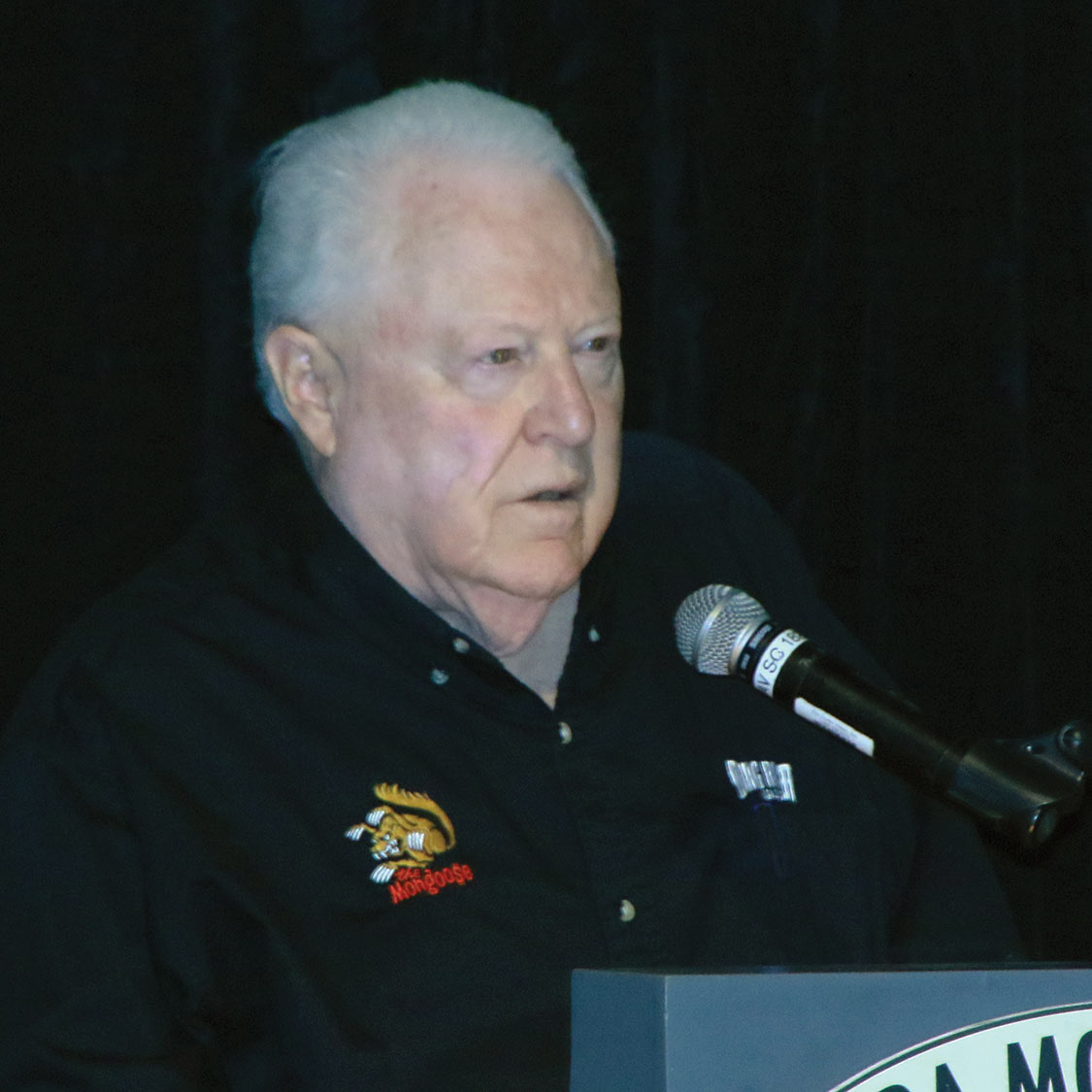
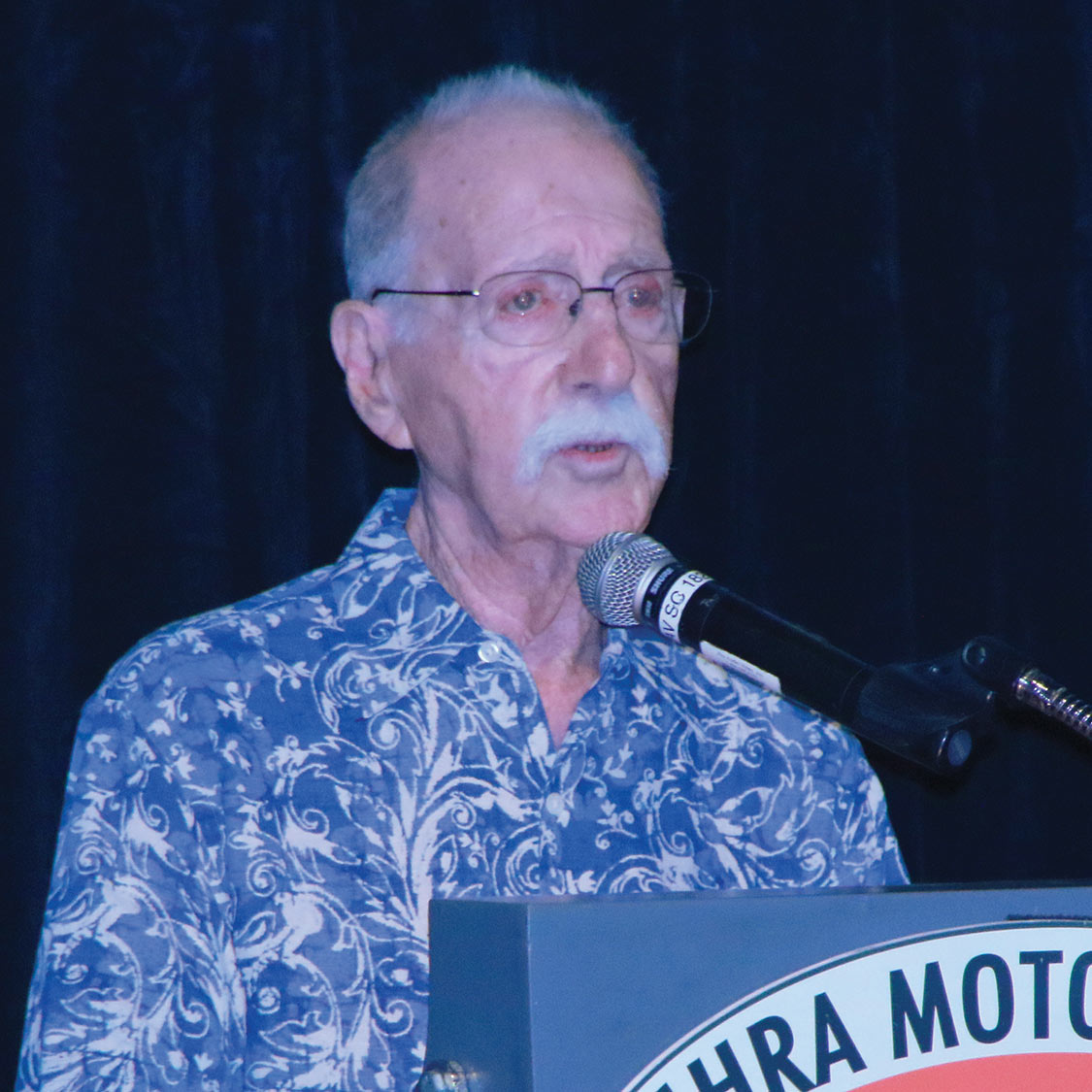
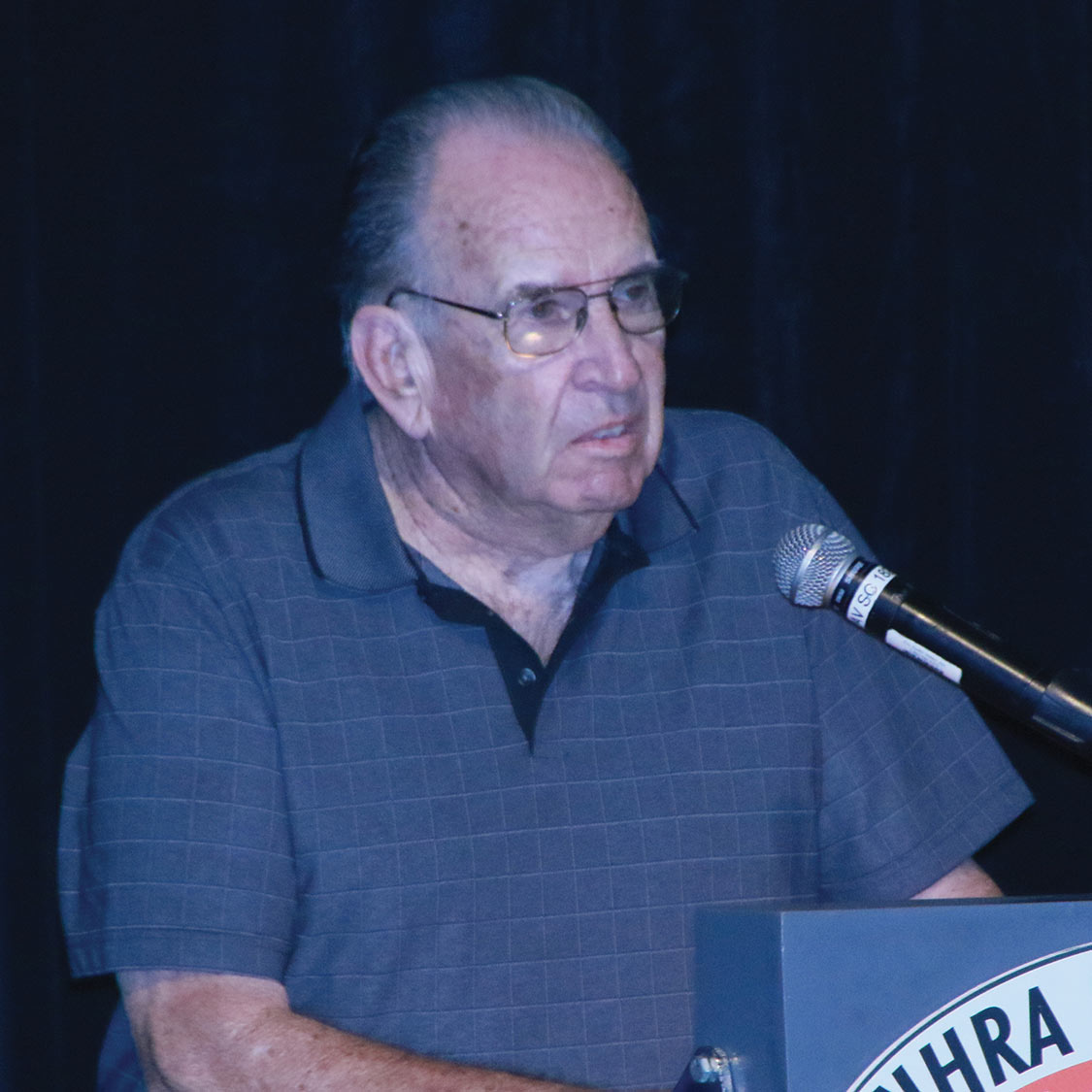
Dave McClelland also spoke, in his characteristic soft and low Southern accent: “Once I drooled at the thought of driving the #25 car and when I asked Art, he gave me the keys. When I returned the keys I told him that it was the roughest ride I have ever driven. Art went 156 mph in that car,” he told the laughing audience.
Art’s granddaughter, Kelly Chrisman Johnson, told the gathering, “Today is a bittersweet day for us as we say goodbye to one of the humblest and most respected in the racing community. He was respectful of others and stubborn, too, but he couldn’t resist the little ones. He loved most, his children and grandchildren and he knew how to give us his full love. He could be brusque and blunt, but he left no doubt in our minds how much he loved us.”
Bud Rasner, who has known Art since the 1950s, said: “Mine is a story of friendship. We were close friends and we went street racing together. My partner was Tom McEwen and we had Joe Reath for a sponsor. Tom and I were in awe of the Chrisman family in Compton. I saw Art at Lions and at Bonneville. The Chrisman’s work was magical.
Art took me to Marine Stadium and introduced me to Rufus Parnelli Jones, another Compton racer who won the Indy 500. I practically lived at the Chrisman house. Tom Madigan, who wrote the Chrisman biography, Chrisman Legacy, Always Faster, echoed Rasner and said, “Art loved to hang out with his friends.”
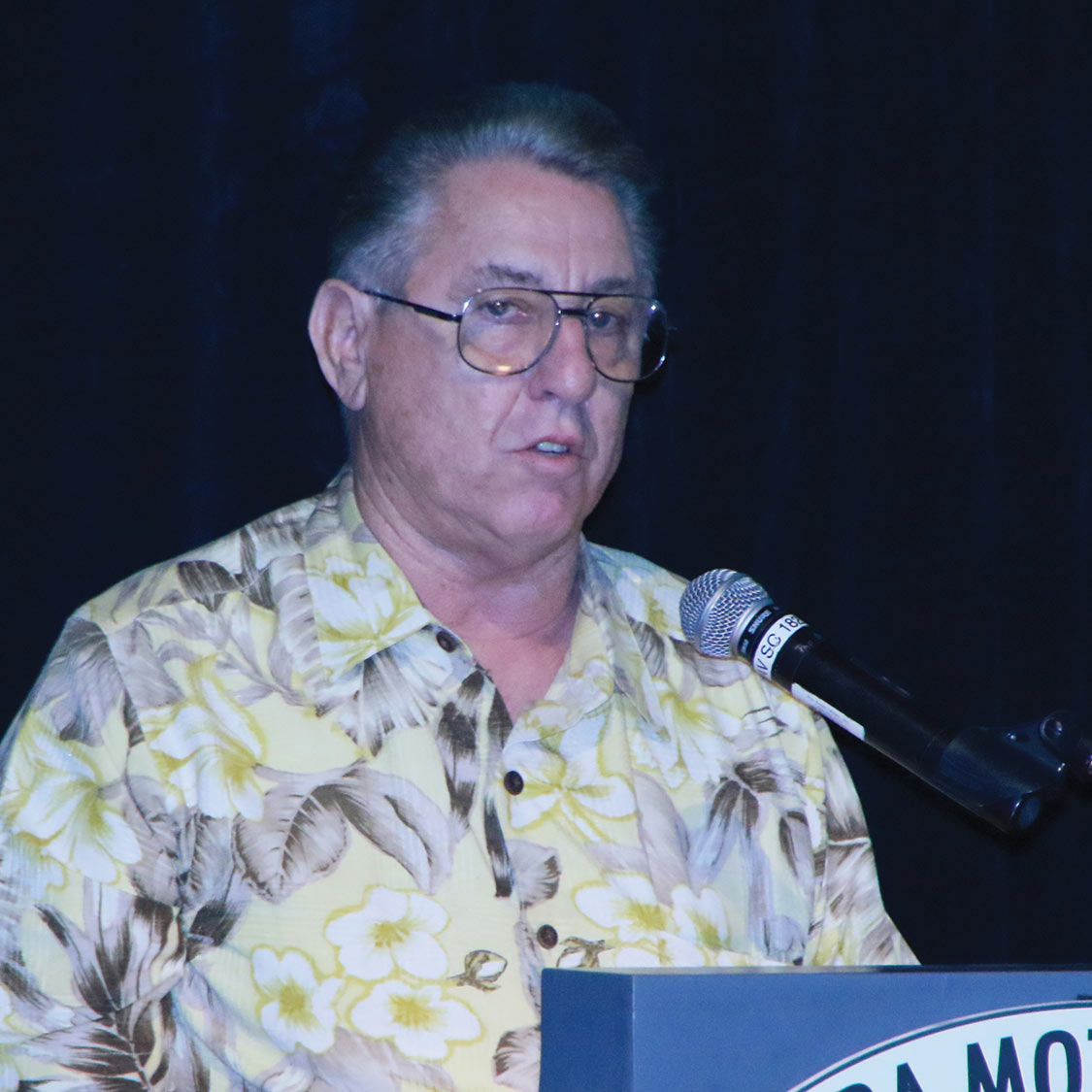
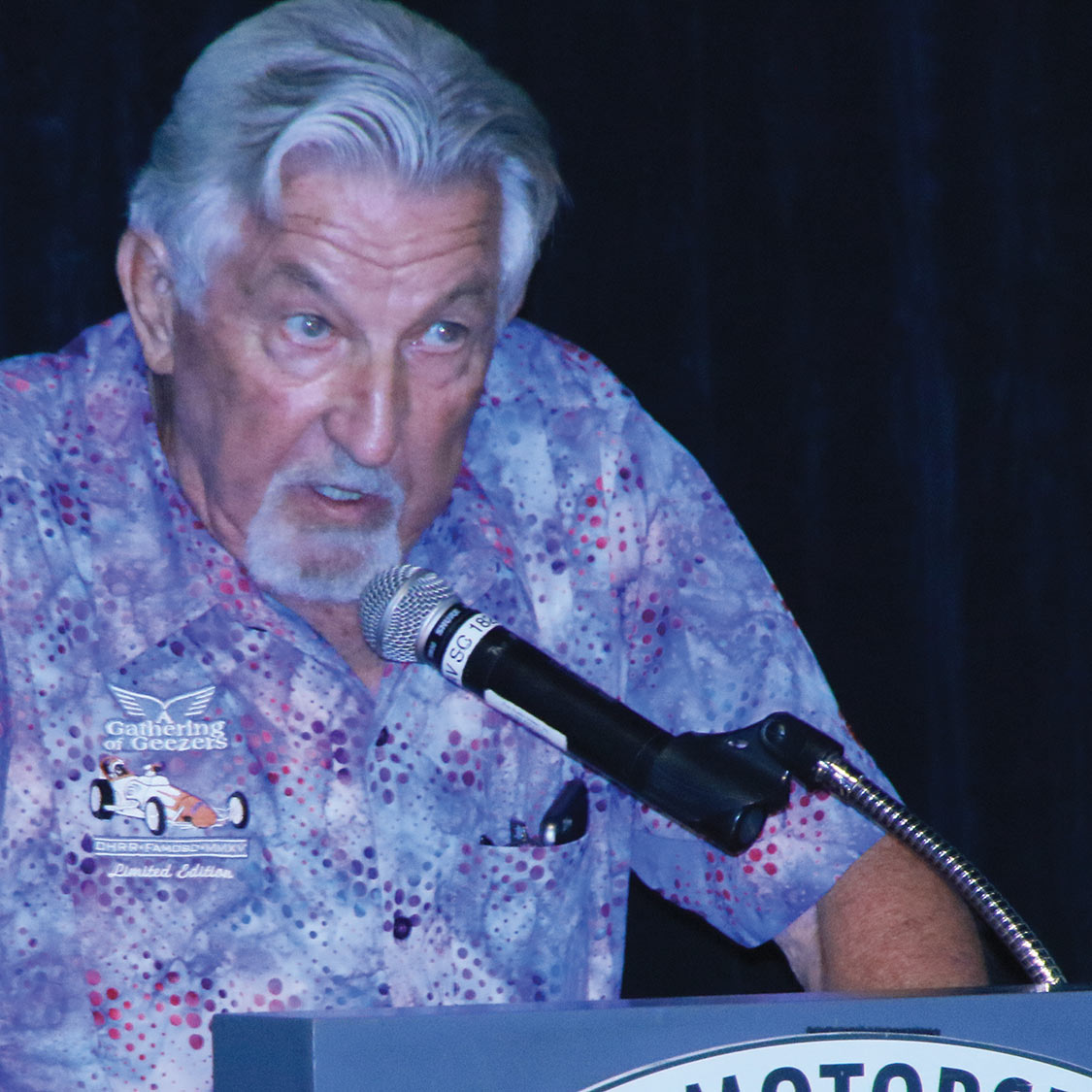
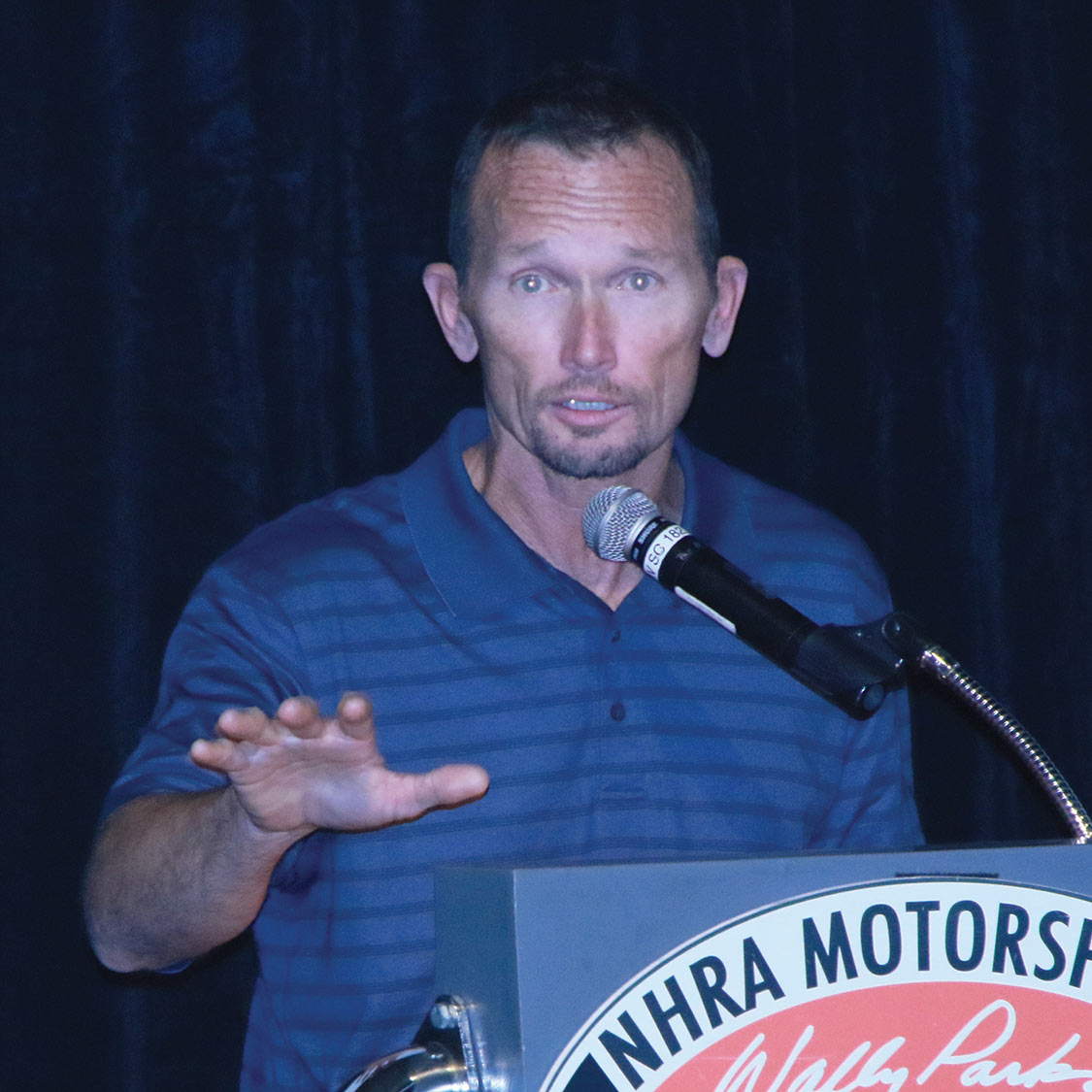
Bobby Spears told us, “Art wasn’t one to toot his own horn and he didn’t like others to do so either. At a cacklefest, Art let Don Garlits light up his engine first and then he cut in on Big Daddy’s show by firing up the mighty Hustler. Garlits was not going to be shown up and kept his engine firing away and neither would Art back down.
On and on the motors roared until Don had to shut off his motor or risk damage. Don told Art that he got him that time but the next time would be different. Art shrugged and said, ‘Bring your lunch.’”
Tom McEwen was the next to speak: “Art was like a father to me and I hung out at his Compton garage all the time. I was just a kid but he taught me to drive. One time we were driving and I ran out of gas and he took racing alcohol out of the racecar and poured it into the tank. It got us to the next town but my car was sure angry.
The Chrisman boys learned mechanics from their father, Everett. There was nothing that they couldn’t do or figure out. When I grumbled to Art once, he said to me, ‘What do you have to complain about; they made a movie out of you.’ I will sure miss him on Wednesday nights when he held an open house for his friends.”
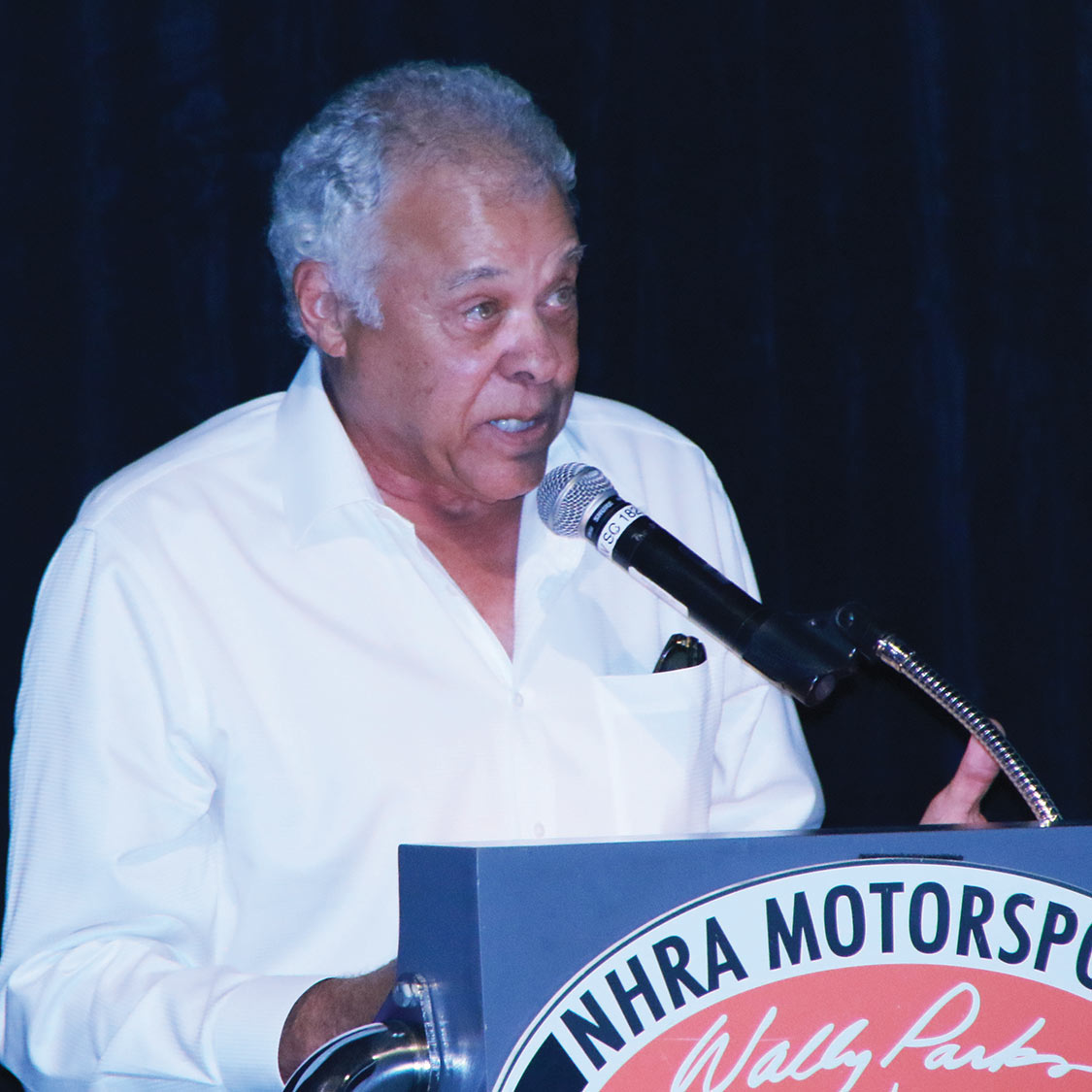
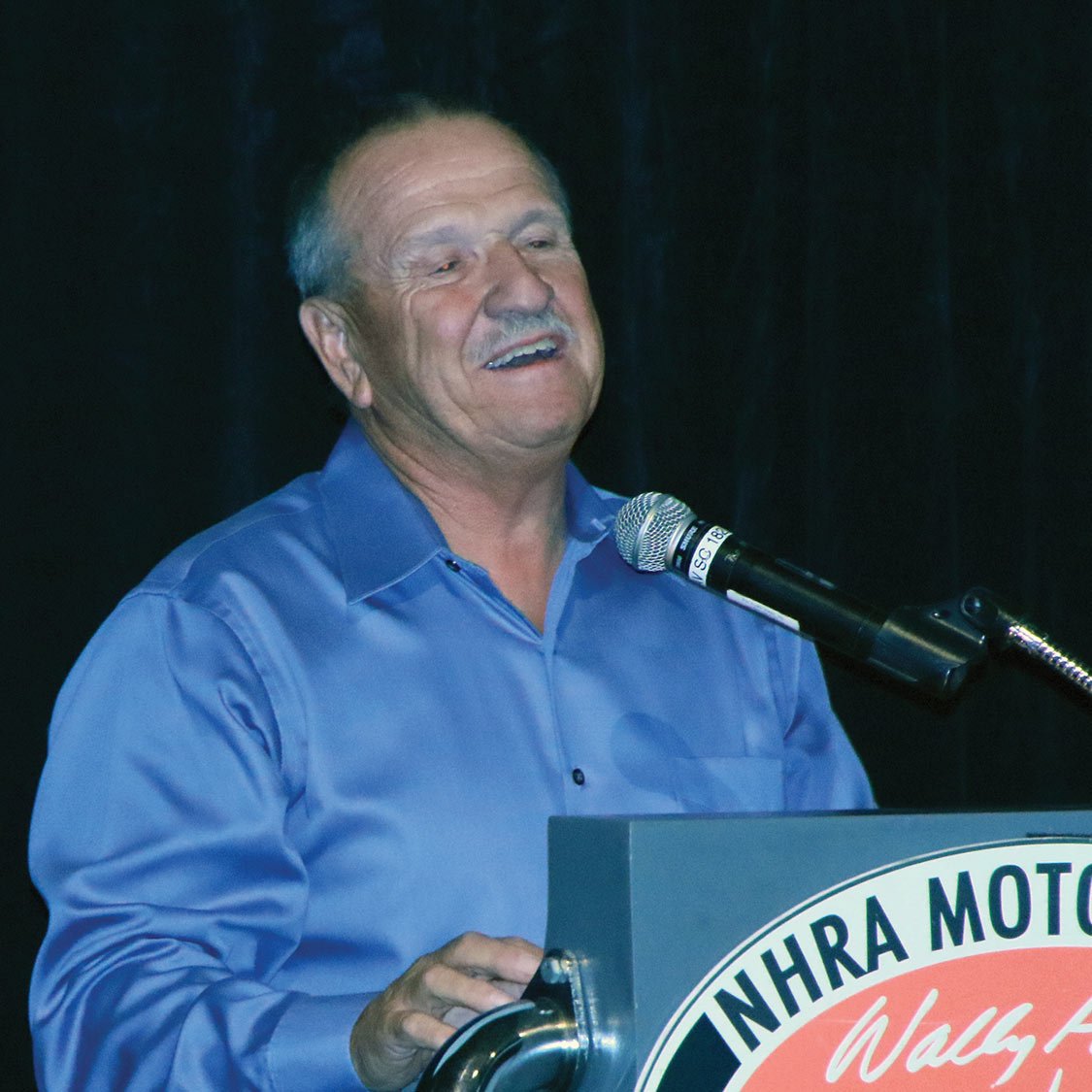
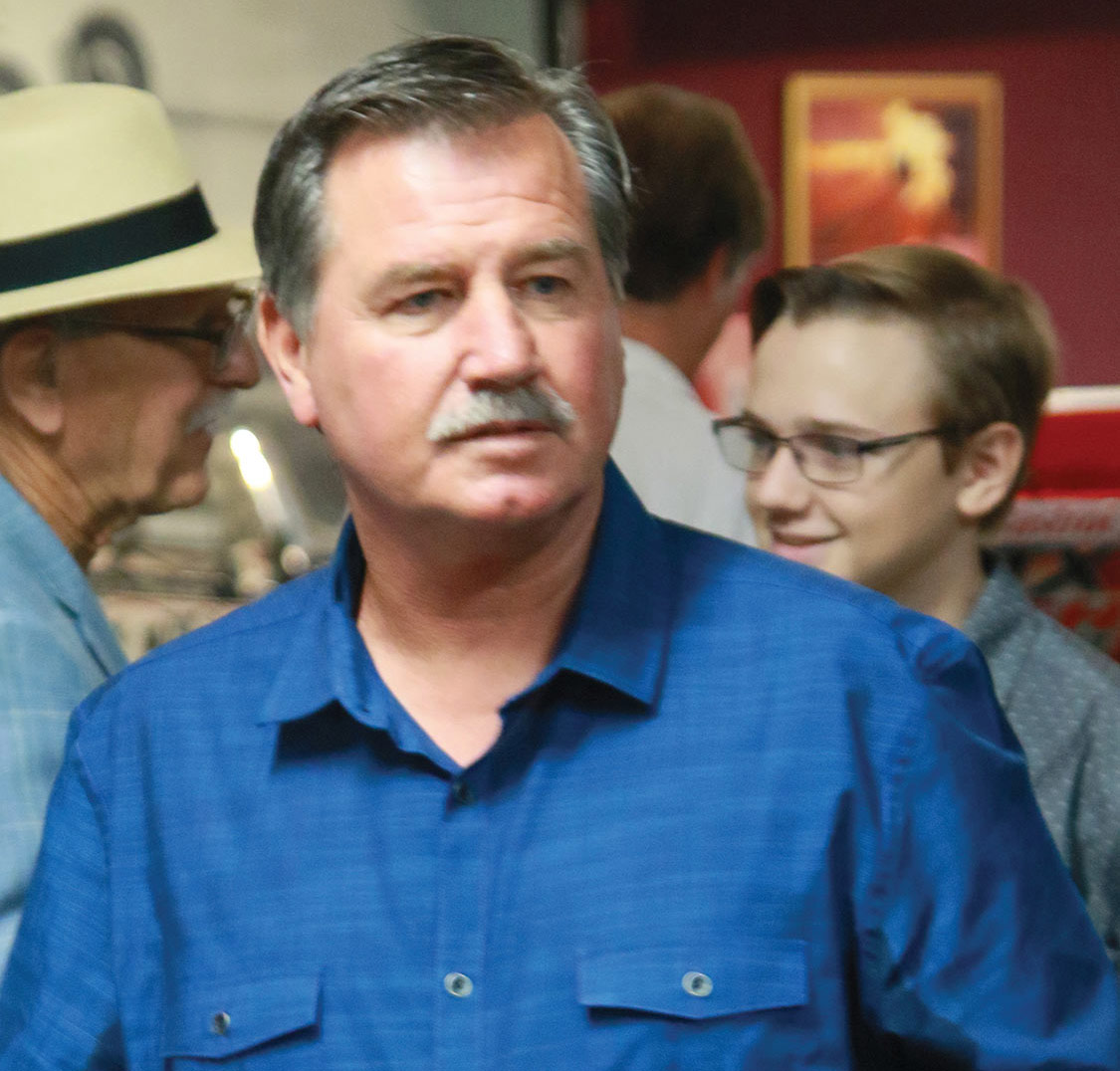
Ed Pink, the master engine builder, came to the podium, speaking after Tom: “I knew Art enough to say Hi to him on occasion. I went to his Compton garage with a problem and he really helped me and that’s when I realized how much he knew.
Art came to me and asked for a job after talking to Lou Baney. I hired Art to work on the dyno and he fixed the problem right away. He also worked on the superchargers. You can usually tell a lot about a person by their shoes.
Art always came to work with his shoes shined and polished. I never met another person who did that. He was professional and meticulous in his work, which was the highest quality. I went to visit him when he was in the ICU and asked him how he was doing. He just said, ‘Damn Good.’ No matter how good or bad the situation his answer was always the same, ‘Damn Good.’ Bless Art and all the Chrisman family.”
Jim Dunn then spoke: “I was one of the lucky ones. When I was 14 I got to drive a car. When my parents asked me what I wanted for my birthday, I said speed equipment parts. I’ve met all the good mechanics, but Art was my teacher.
He’d explain carefully what I needed to do and it made sense. He taught me about blowers, clutches and everything else. Don’t feel sorry for us because we are old, we were the lucky ones. But our wives should go right into a Hall of Fame.” Big Jim got a big roar of delight from many women in the audience.
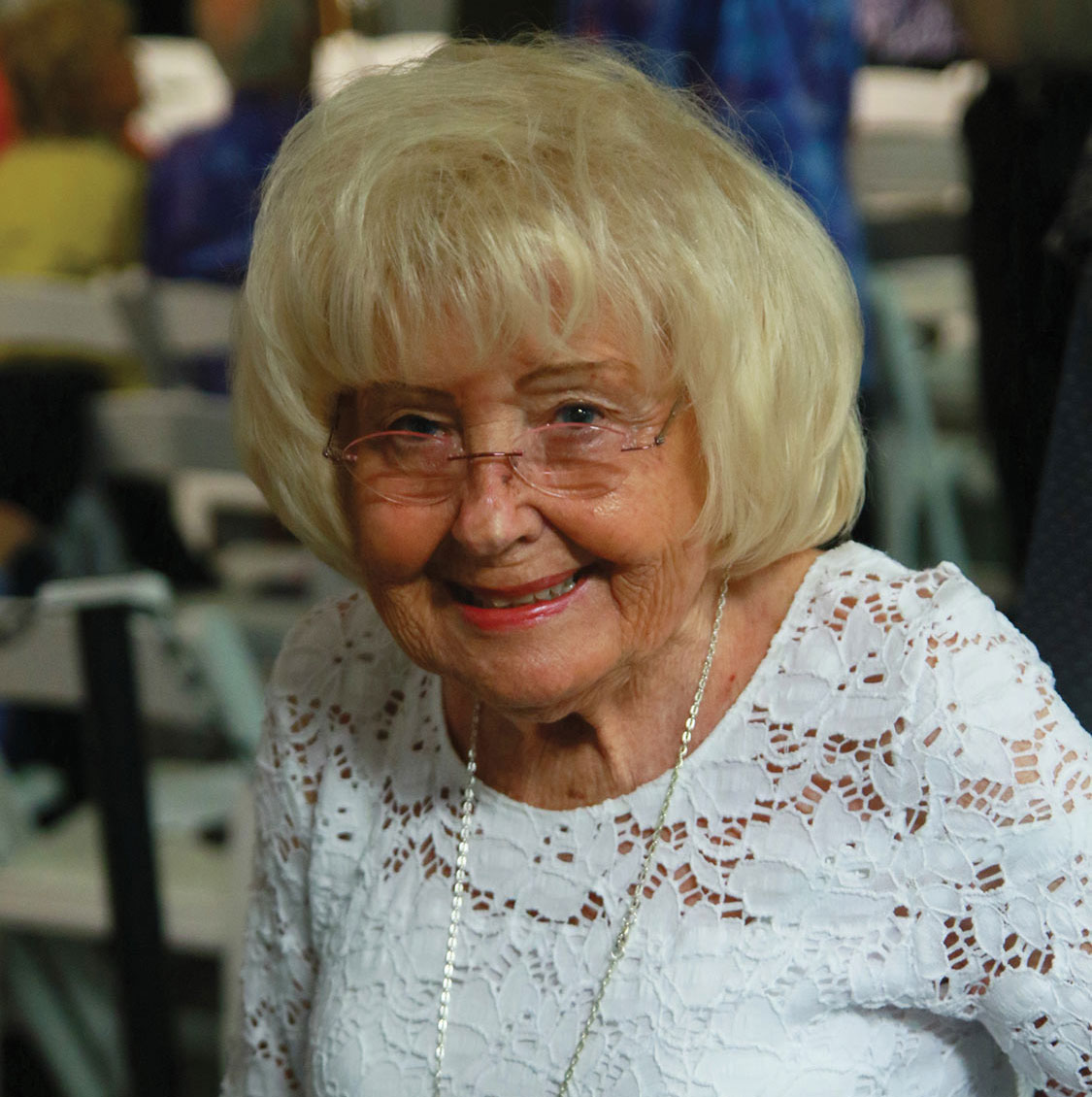
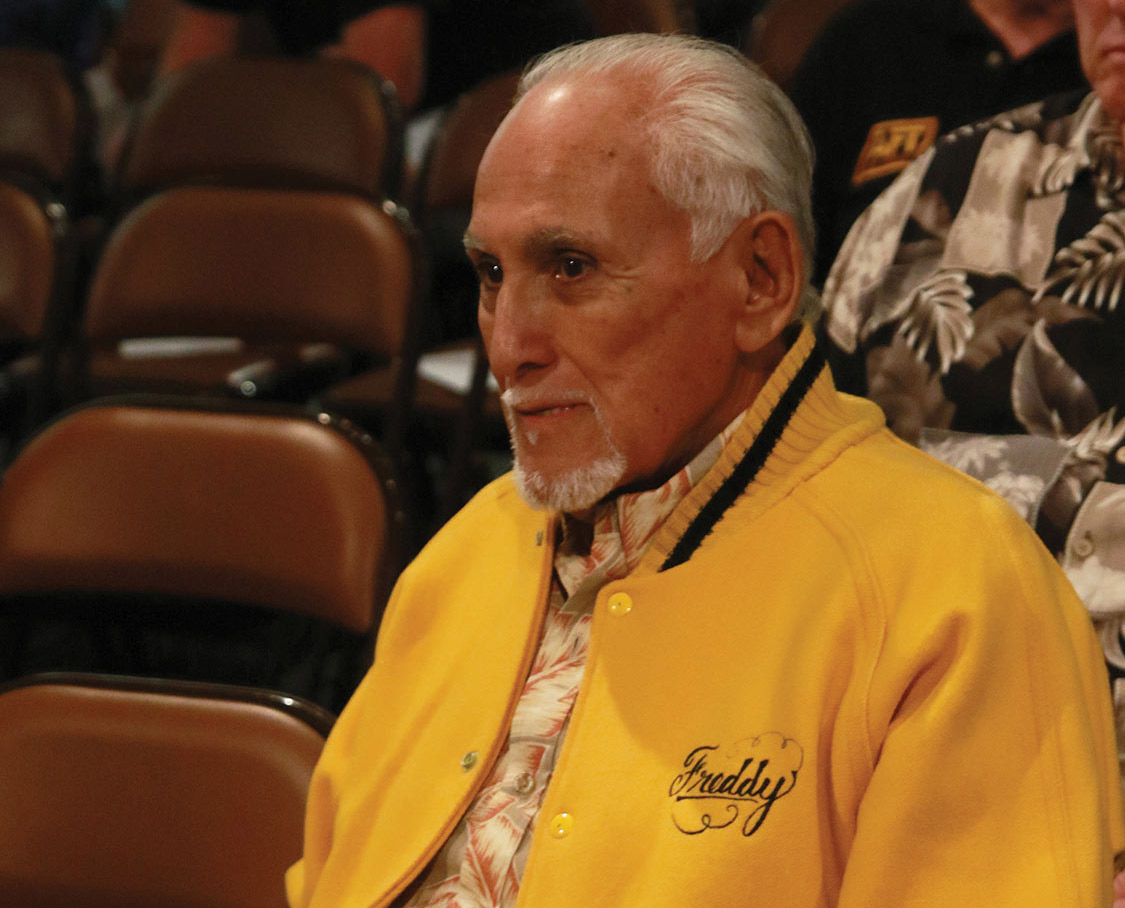
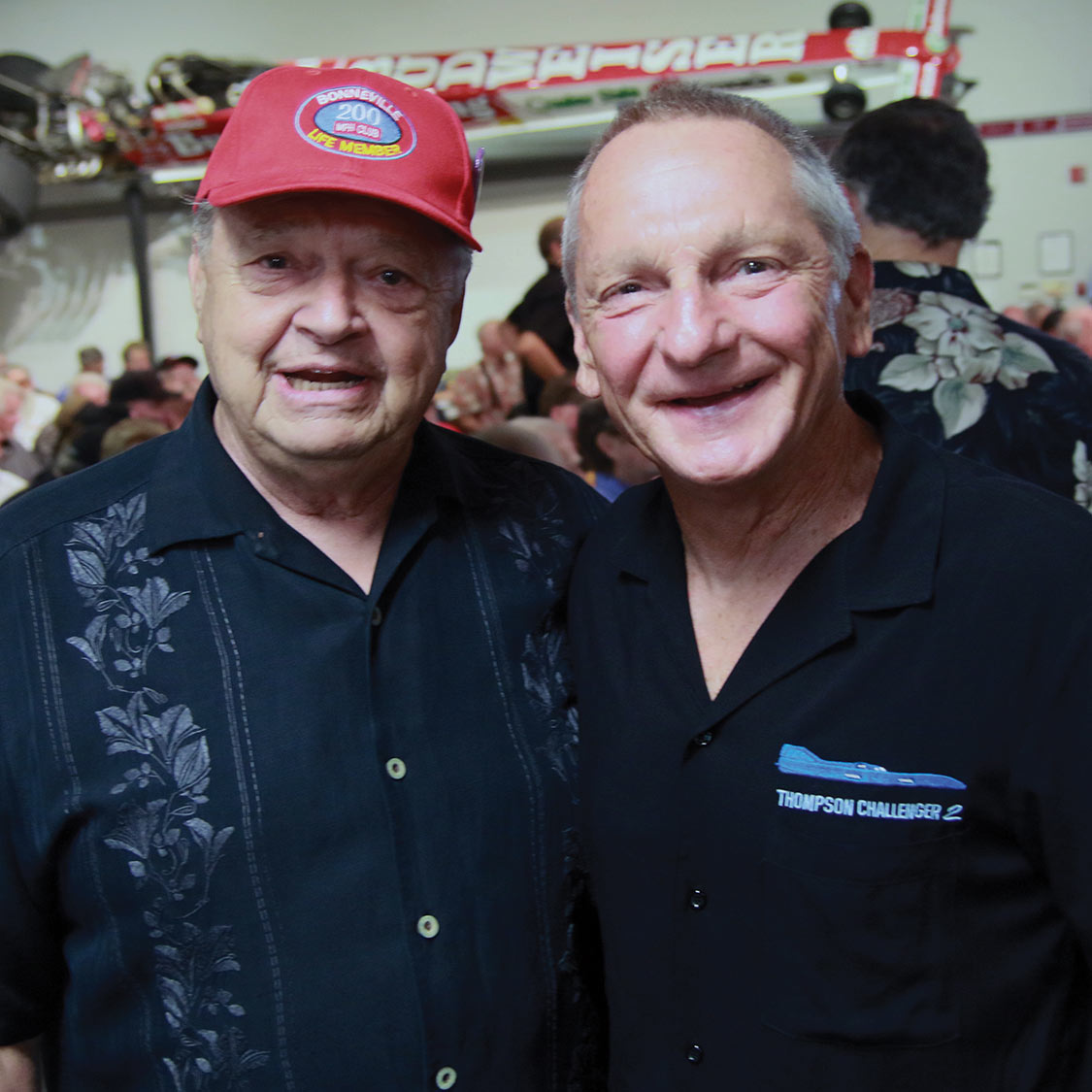
Land Speed legend Al Teague followed on the microphone: “Art Chrisman was all about mentoring. Art and Big Jim Dunn taught the younger racers…He built beautiful cars. Art would check our spark plugs at the Salt Flats and show me things I didn’t know. We’ve lost a gentleman and a true innovator of the sport of racing.”
Steve Gibbs, who was instrumental in organizing the Celebration of Life event, was the next to speak: “Art was a quality guy…We were in awe of him as kids. Art was a very humble guy who loves what he does and never blows his own horn…He was the ultimate hot rodder. He was my hero, friend and like my family. I loved the guy and we will miss him.”
Don “The Snake” Prudhomme said, “I’m part of the young generation,” which elicited loud laughter from the audience. “We went to Lion’s drag strip and we all heard about Art, who we were in awe of. I had to race Art and my foot was shaking. I don’t remember who won [more raucous laughter]. We all bought our equipment at Ed Pink’s even though his prices were steep [loud laughter], because it was great quality and Art helped make it that way. He impressed me at Bakersfield with his win there.
Art liked to torment Don Garlits. Art was a quiet man, at the drags, museum or his shop. He was the guy that could make things happen and the modern racers have sadly forgotten guys like Art Chrisman.”
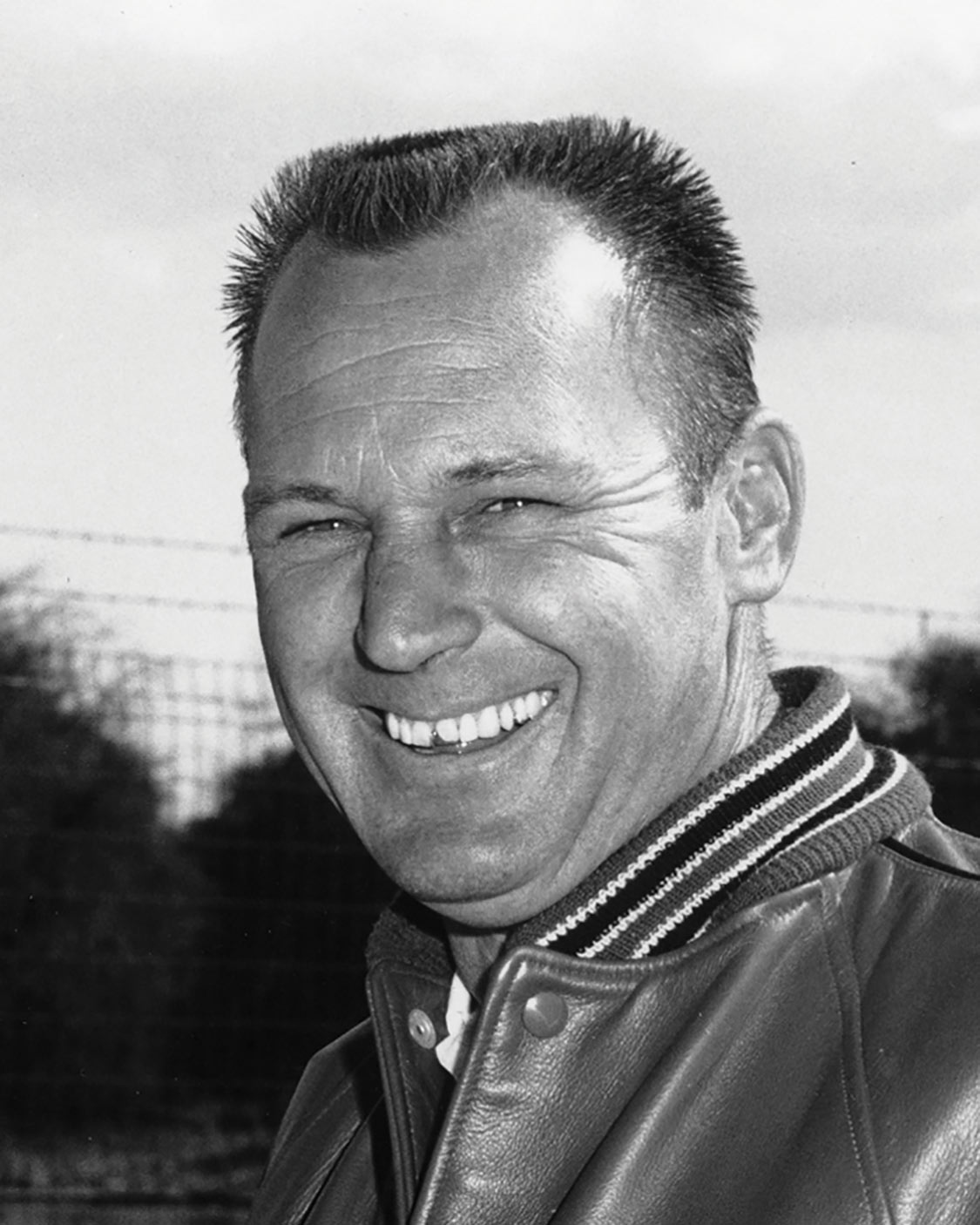
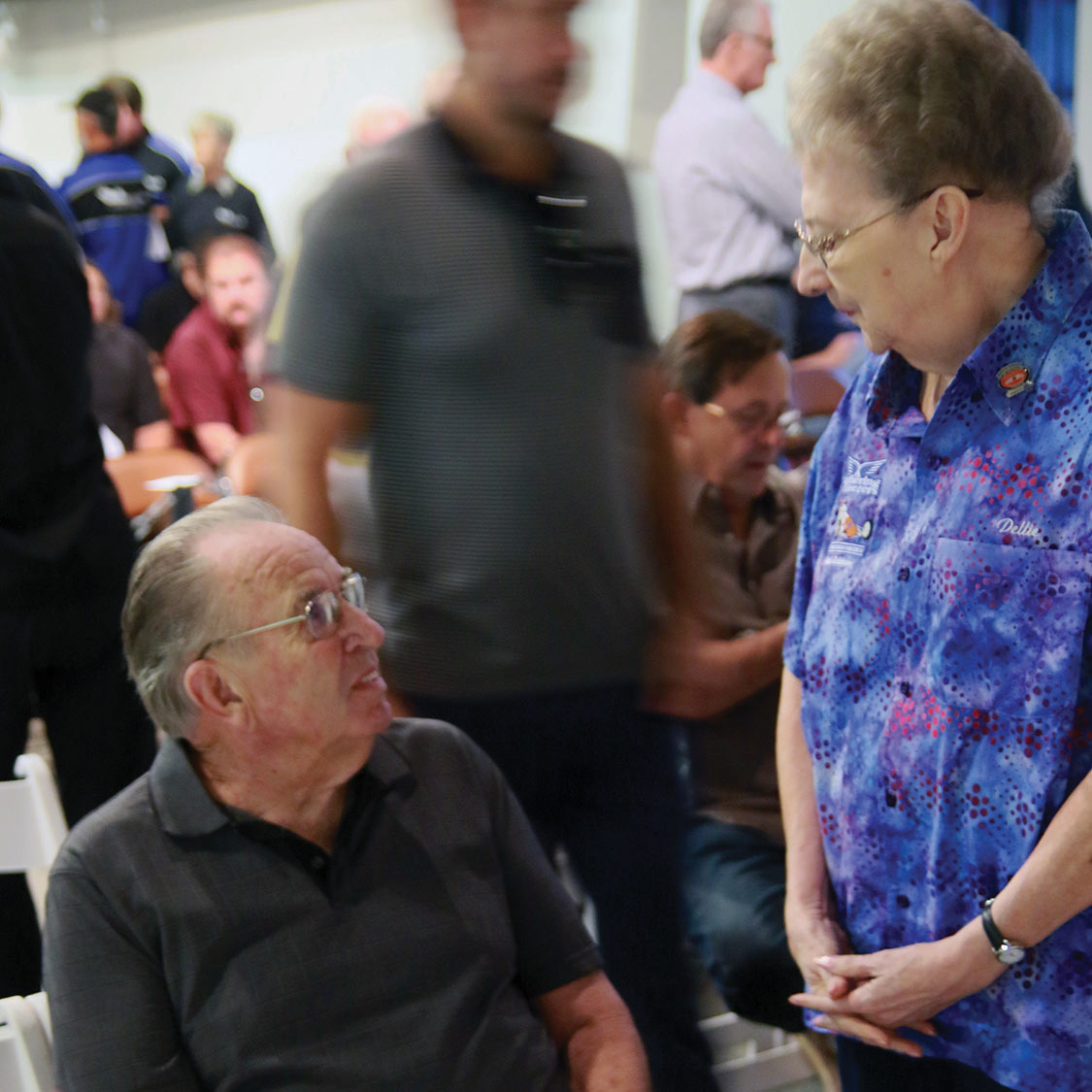
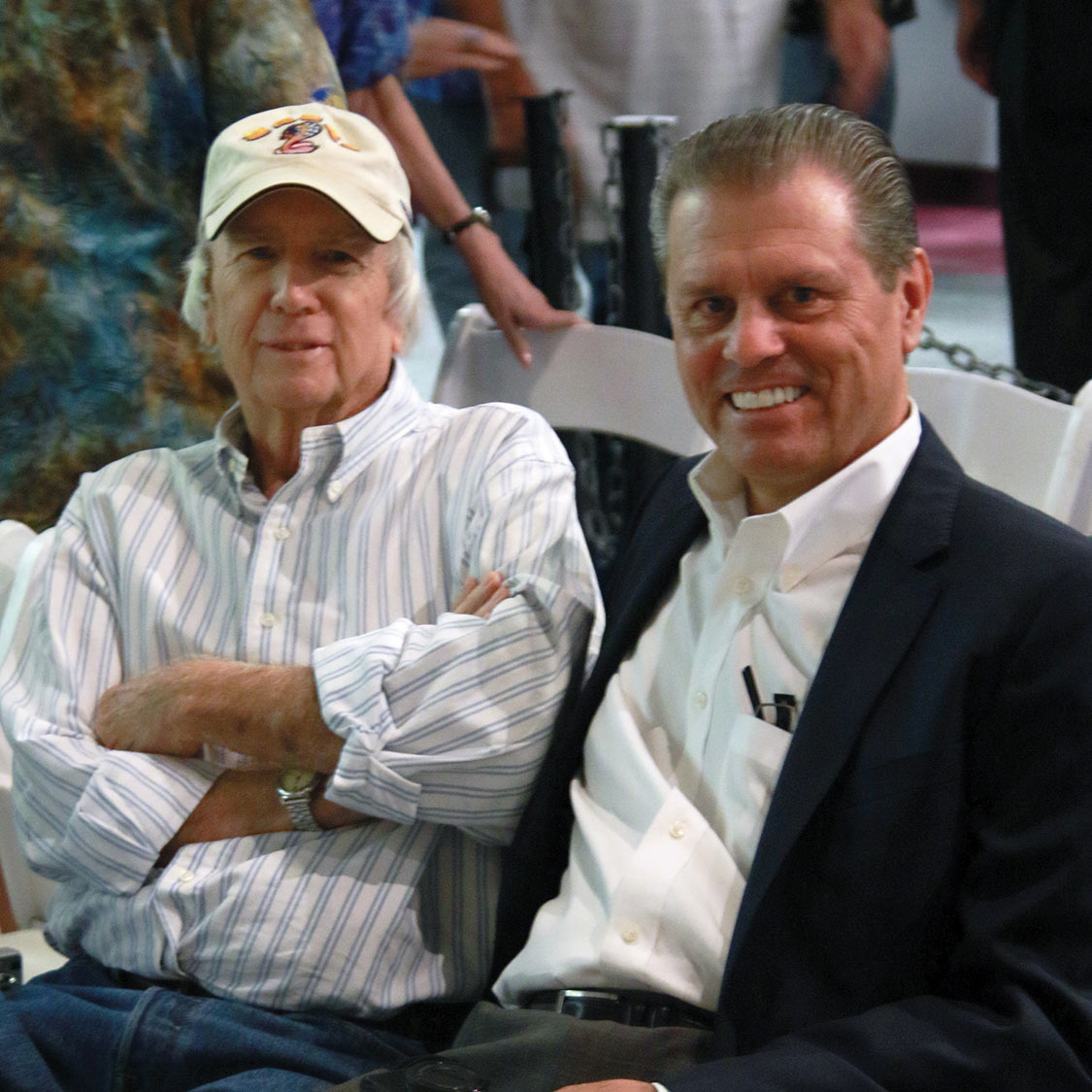
Dave McClelland introduced Gary Beck, the two-time NHRA dragster champion from Canada. “I first met Art when his son Mike came to drive the John Rodeck car. It was a little intimidating to have Art Chrisman look over your shoulder as we worked on the car.
We didn’t have all the fancy rigs and equipment that racing teams have today and it wasn’t easy working on cars while on the road, but Art knew all the old-time mechanic’s tricks. I remember that famous burn down at Bakersfield between Garlits and Chrisman. They went on forever it seemed as the crowd roared their approval.”
Fast Jack Beckman, as animated as any driver this side of John Force, said, “Why did Wally Parks choose Art Chrisman to make the first run at Great Bend, Kansas in the first U.S. Nationals back in 1955? Because Art represented the best in drag racing. I went through cancer, too, and know how hard he fought it. Art was true racing royalty.”
Richard Catton, Art’s brother-in-law, was very close to Art: “I started to go to drag races to see Art drive the Hustler. I kept bugging Dorothy to get Art to take me to the drag strips with him. One day the bugging worked and Art called and said, ‘Let’s go to the races.’ One time I took Mike out to a nightclub after the races and he came home a bit sloshed.
Art didn’t yell at me, he just said in that dry humor of his, ‘You do know that Mike is only 12 years old?’ One time Art brought a T-shirt home for Mike and he wore it to school. It had a map of all the brothels in Nevada on it! That sure caused a lot of commotion. It never mattered who you were or how famous you might be, Art was there to help one and all.”
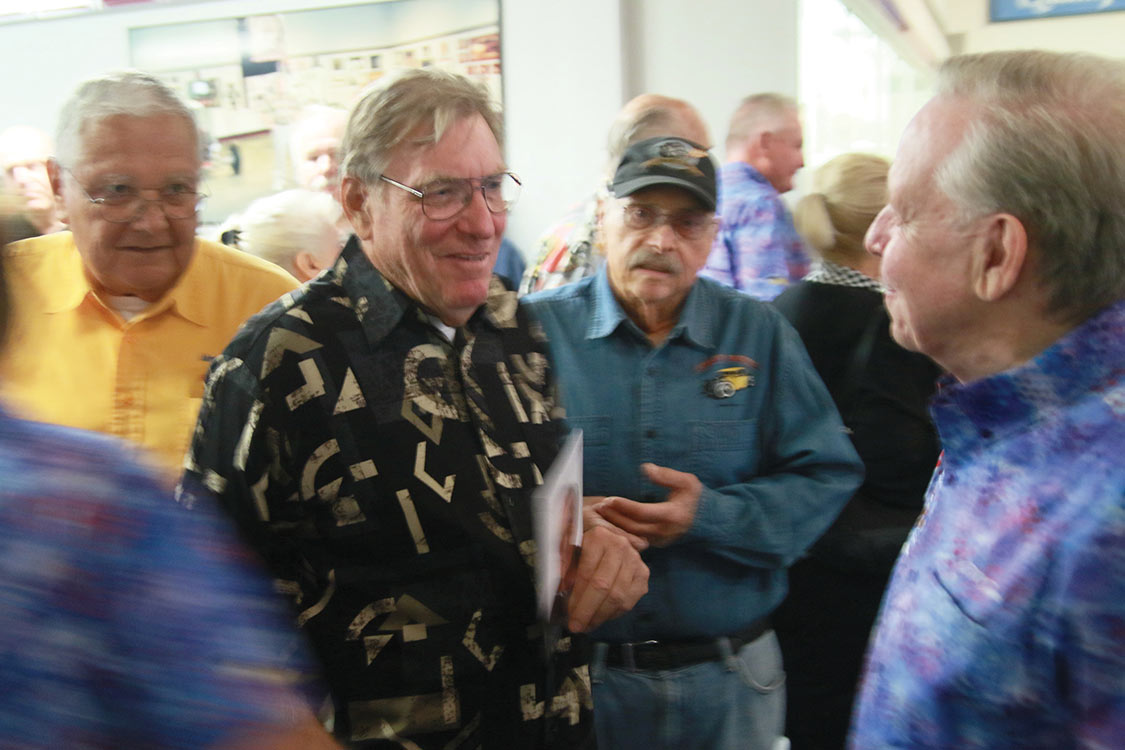
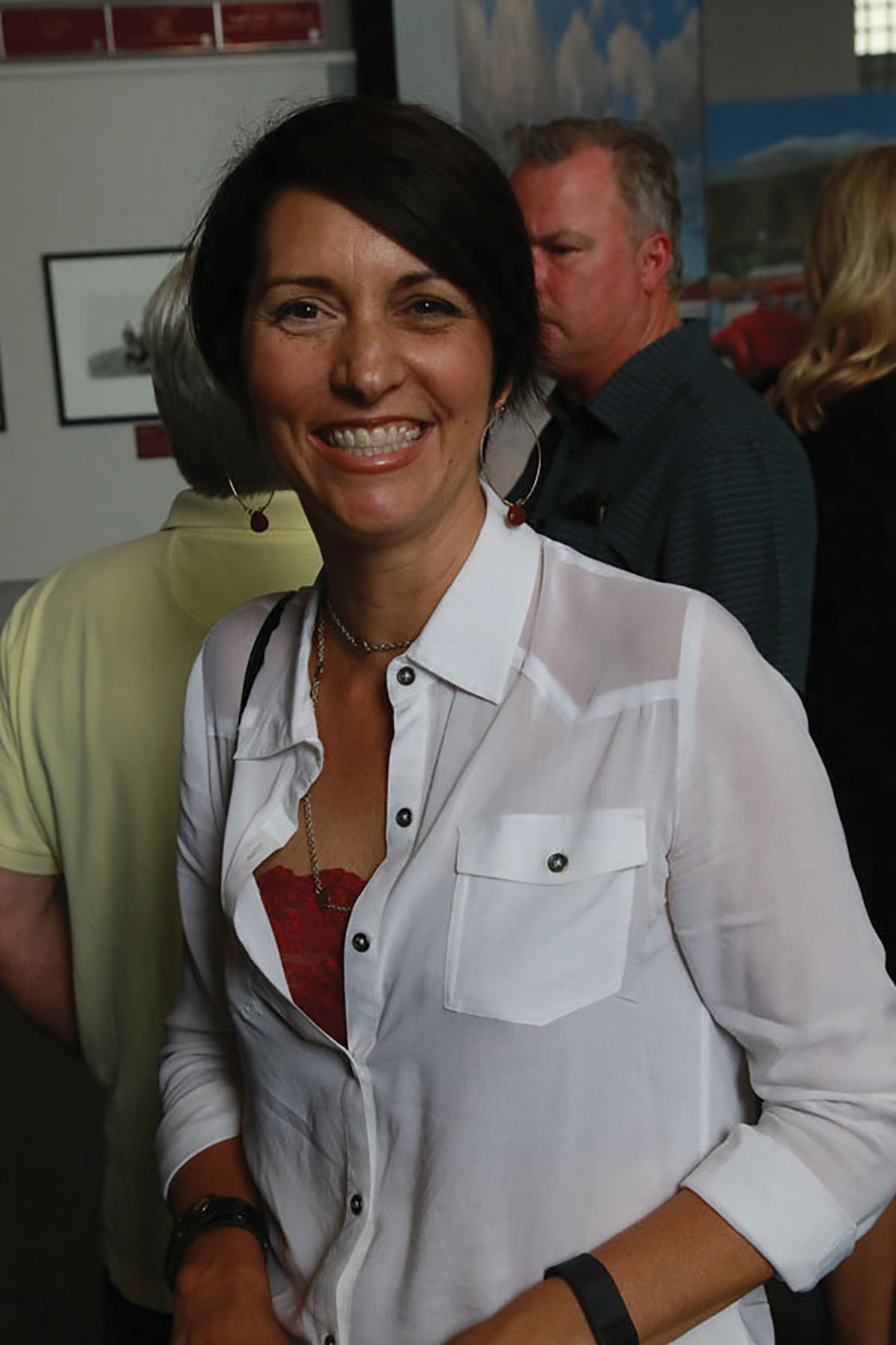
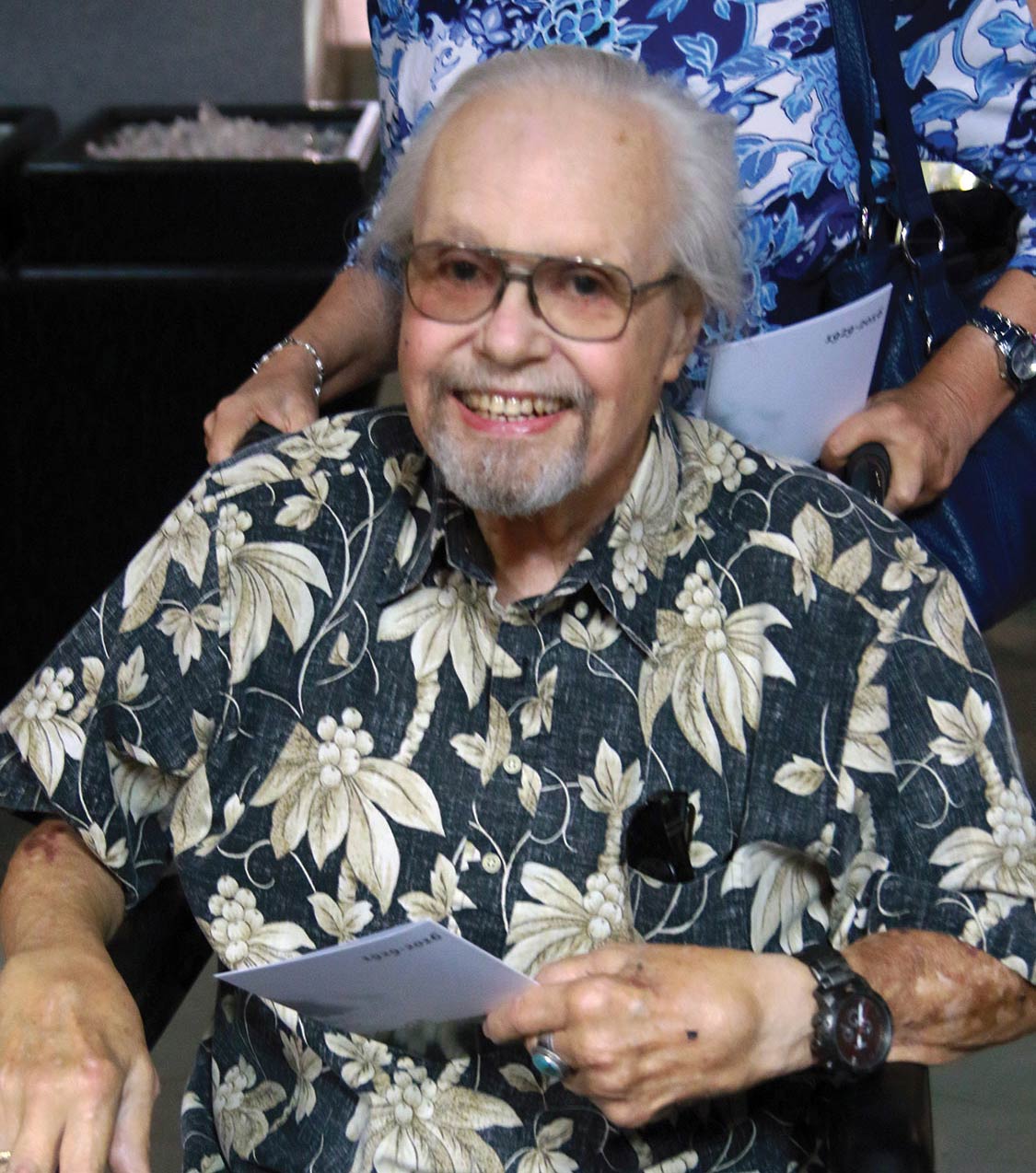
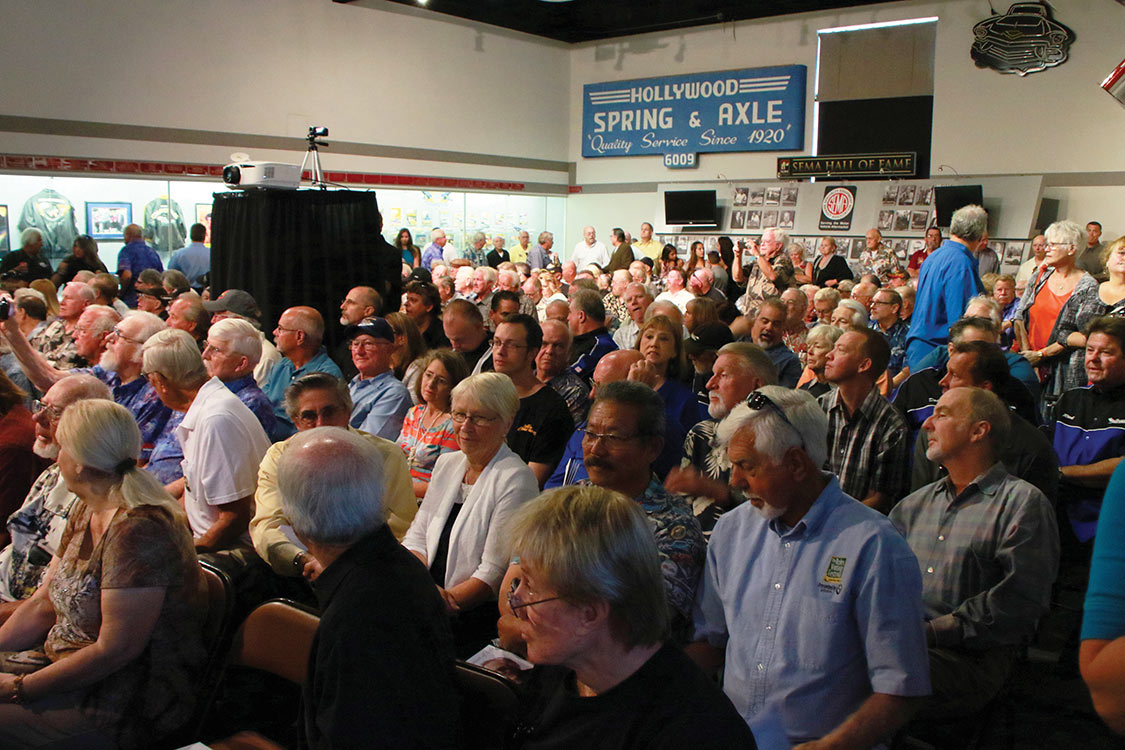
Then Dave McClelland read a letter from an old friend and nemesis on the drag strip. “Art was a professional. He was always a quality person,” wrote Don Garlits. And the day ended just as it should have.
Listed are a few of the old friends in attendance; Mike Uribe and Fred Angelo from the Bean Bandits, Nick Arias Jr and Fred Blanchard from Arias Pistons, Orah Mae Millar and her daughter Robin Millar who keep Pete Millar’s cartooning legacy alive, Dick and Beverly Martin, Justin Arias, Ed Osepian, Bud and Lynn Rasner, Andy Brizio, Linda Vaughn, Jim Miller, Gloria Gibbs, Cindy Gibbs Arias, Mike Kuhl, Ed Iskenderian, Sheri Watson, Lynn and Bud Rasmus, Hot Rod Sheri, Wayne Phillips, Larry Fisher, John Duran, Dave Parker, Al and Jane Teague, Mindy Frye, Scrub Hansen, Jim Murphy, Ed Justice Jr, Roy Fjastad, Dellie Reath, Jerry Kugel, Jim Rossi, Joel Gruzen, Mindy Fry, Spider Razon, Justin Arias, Bob and Sharon Muravez, Walt Stevens, Bobbie Colgrove, Lewis Bloom, Steve Chrisman, and many more.
Editor’s Note: A version of this article first appeared in the December 2016 print issue of the Drive Magazine.